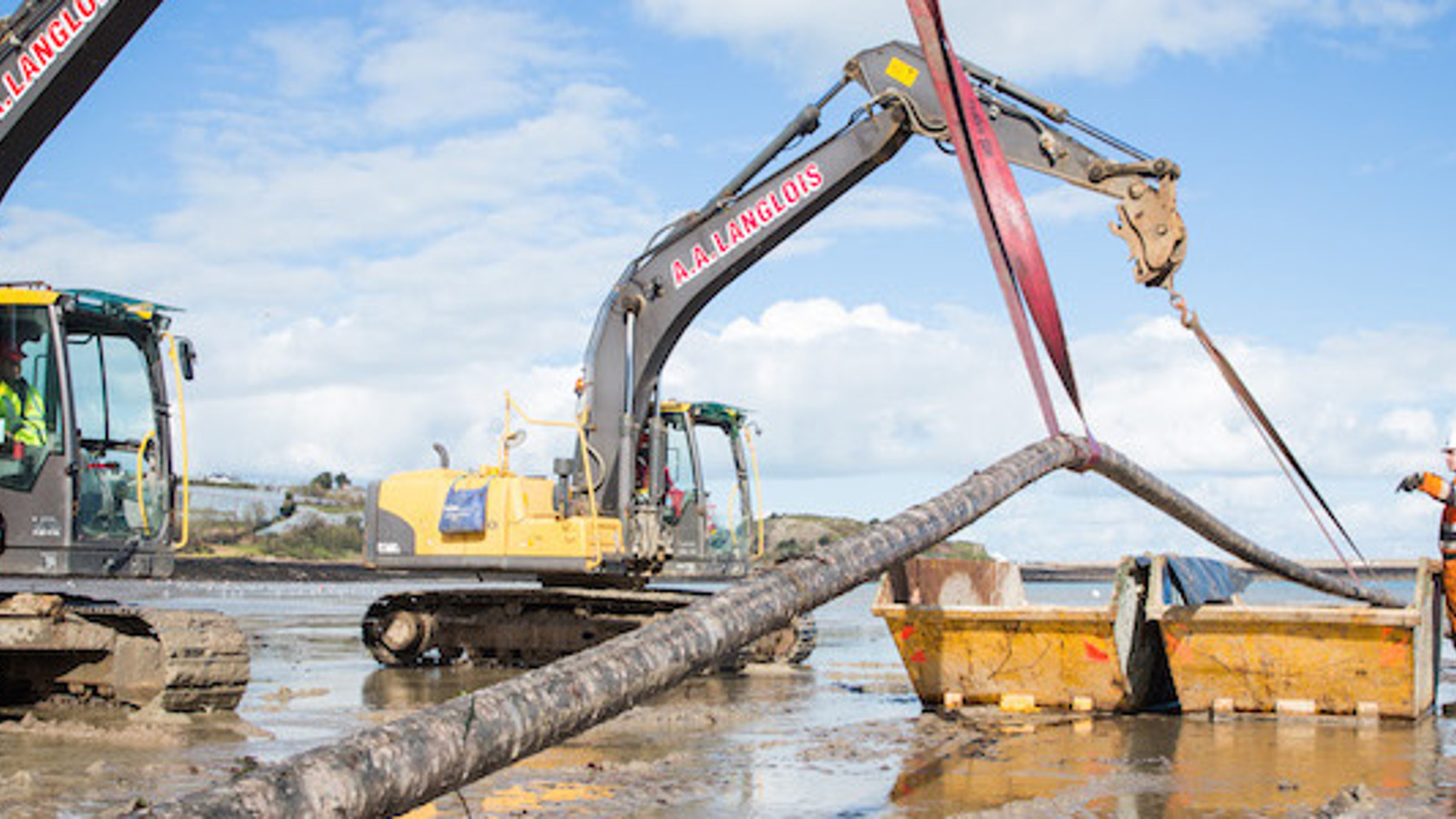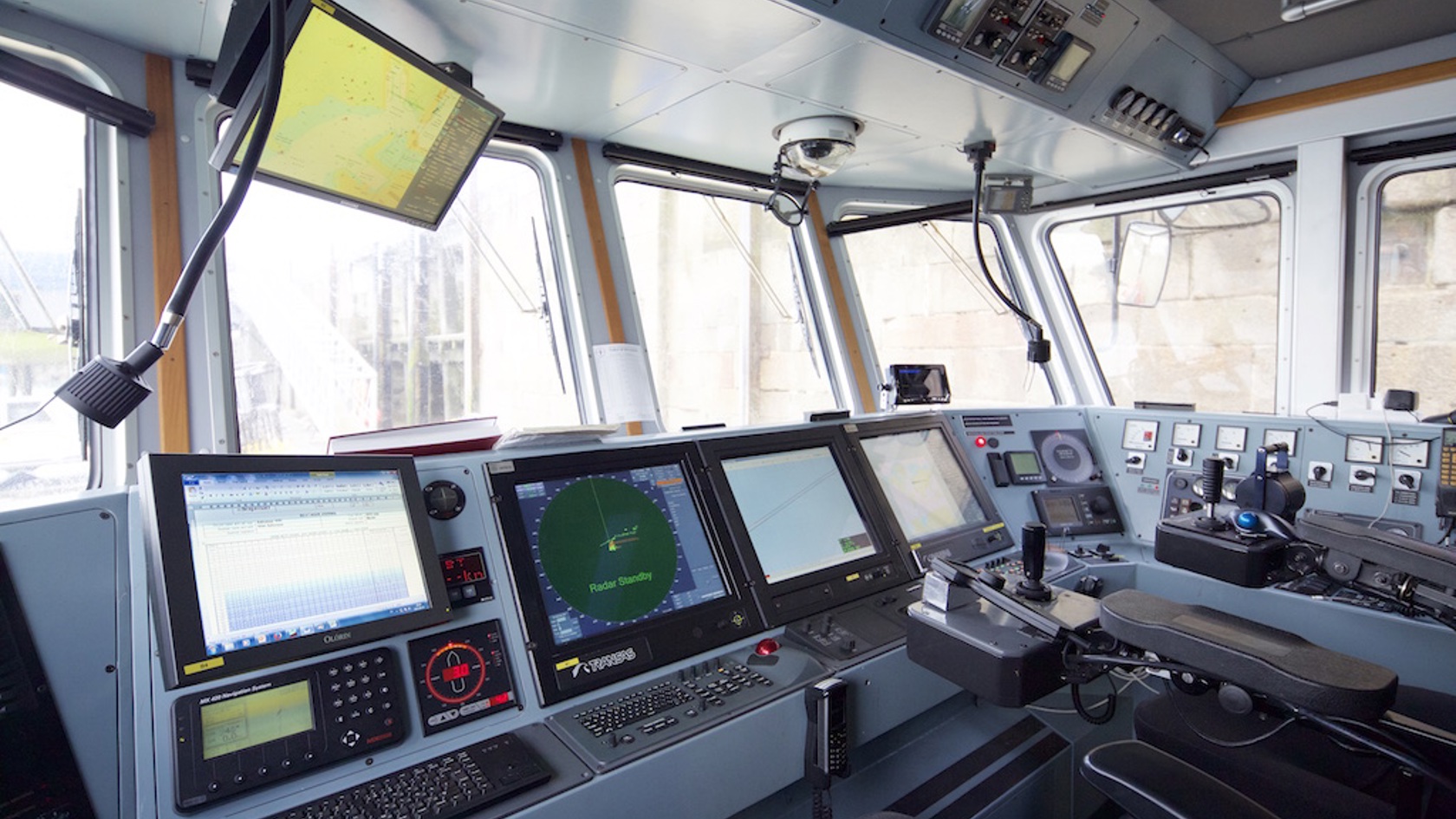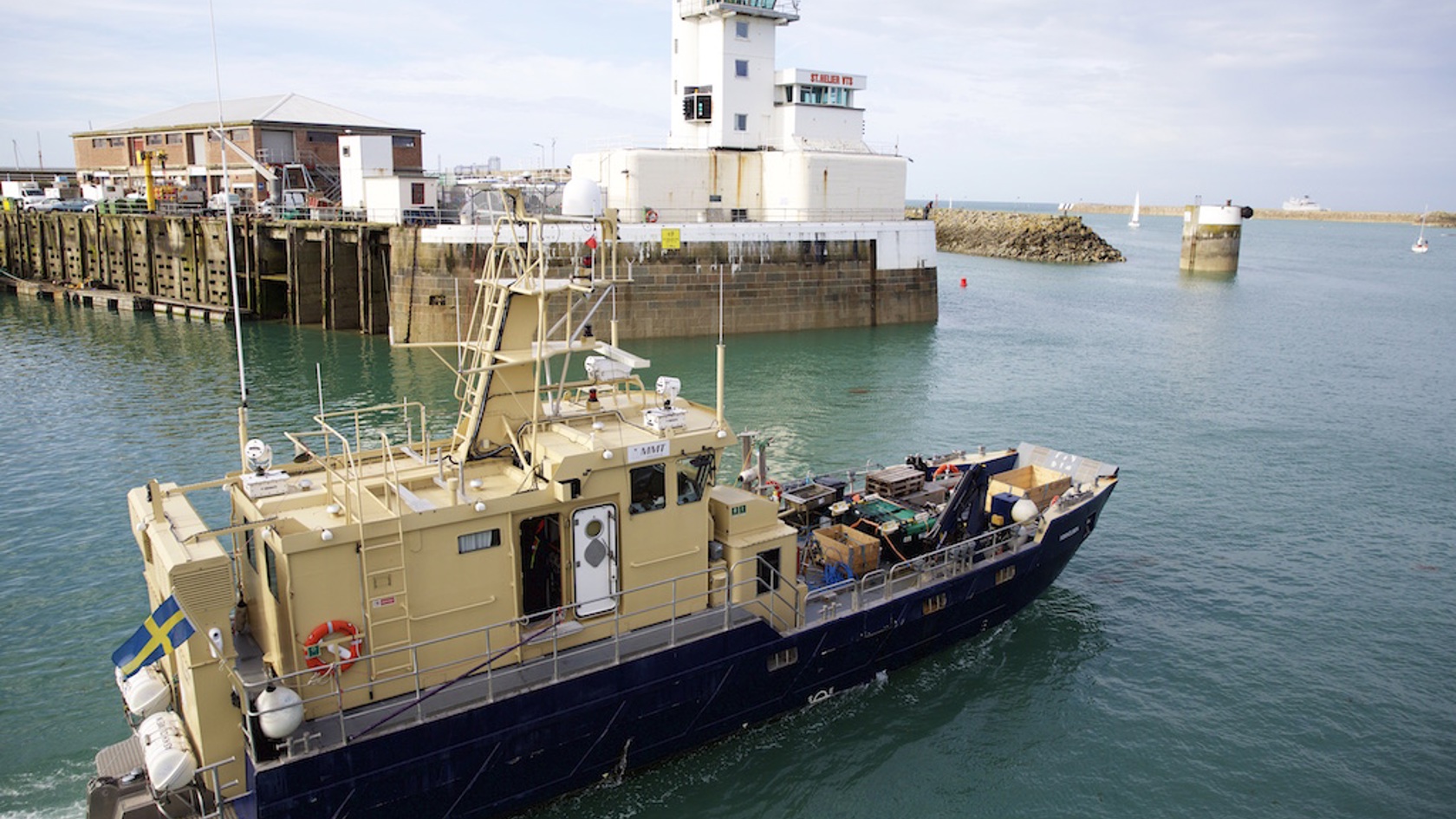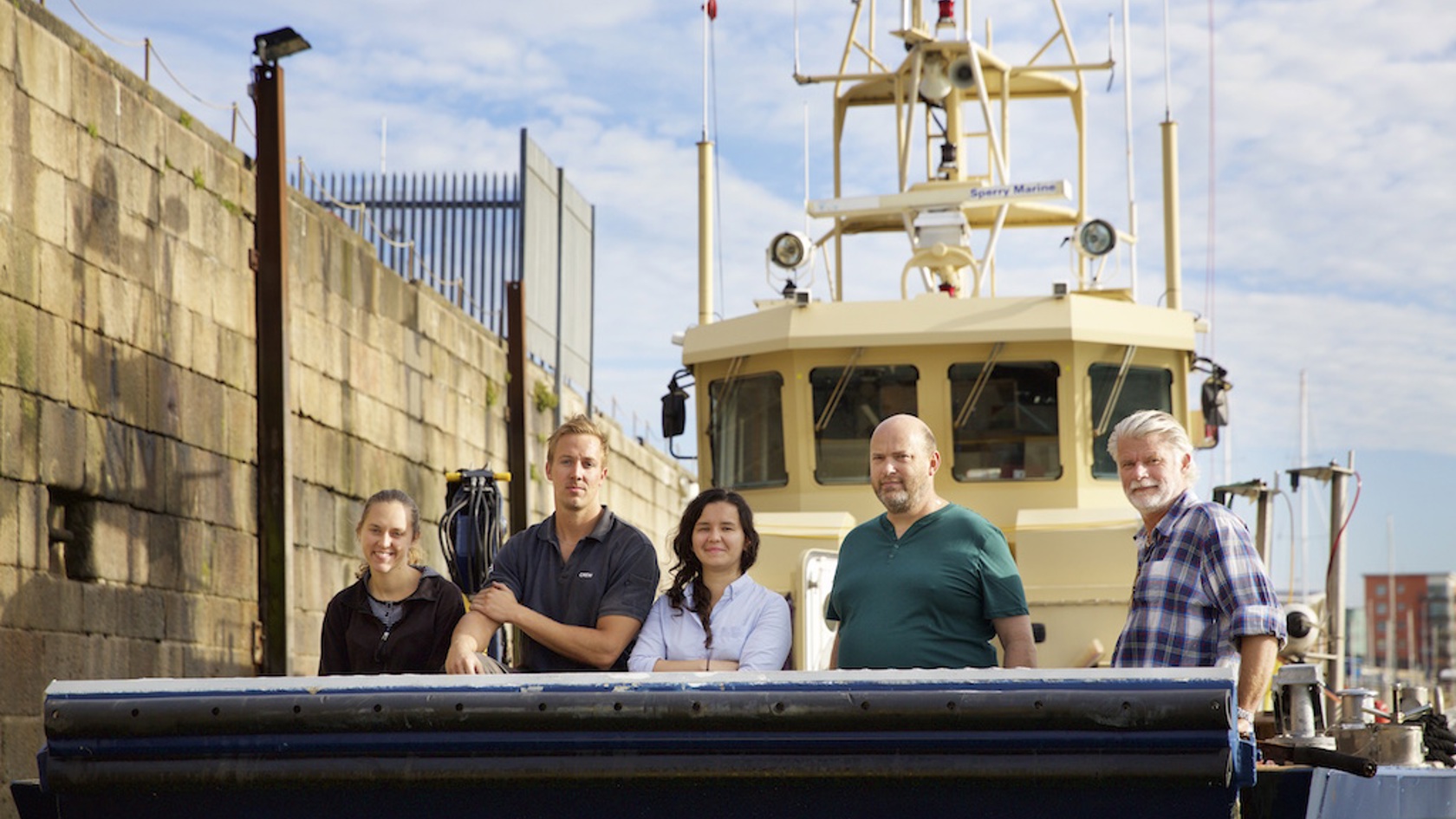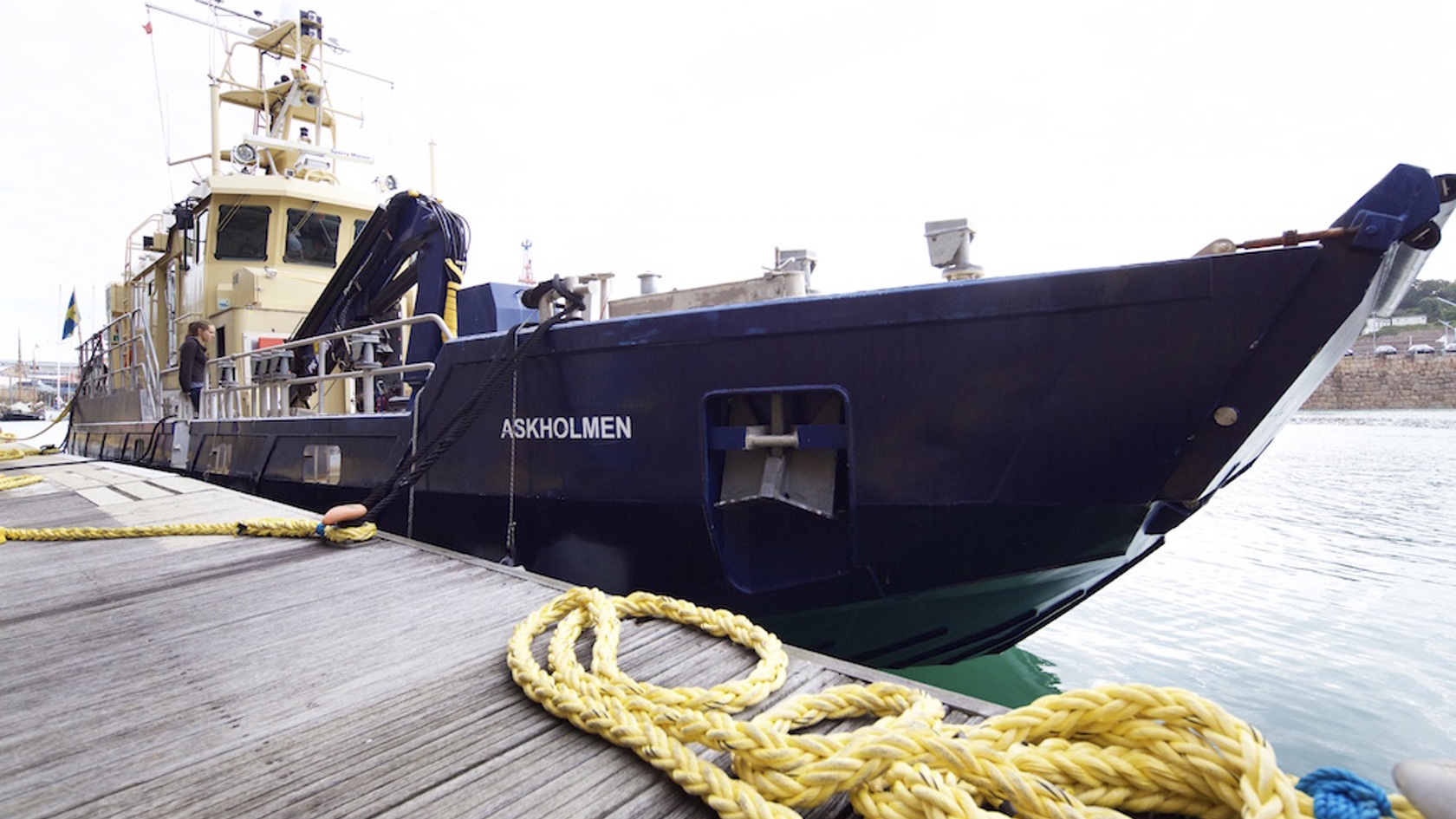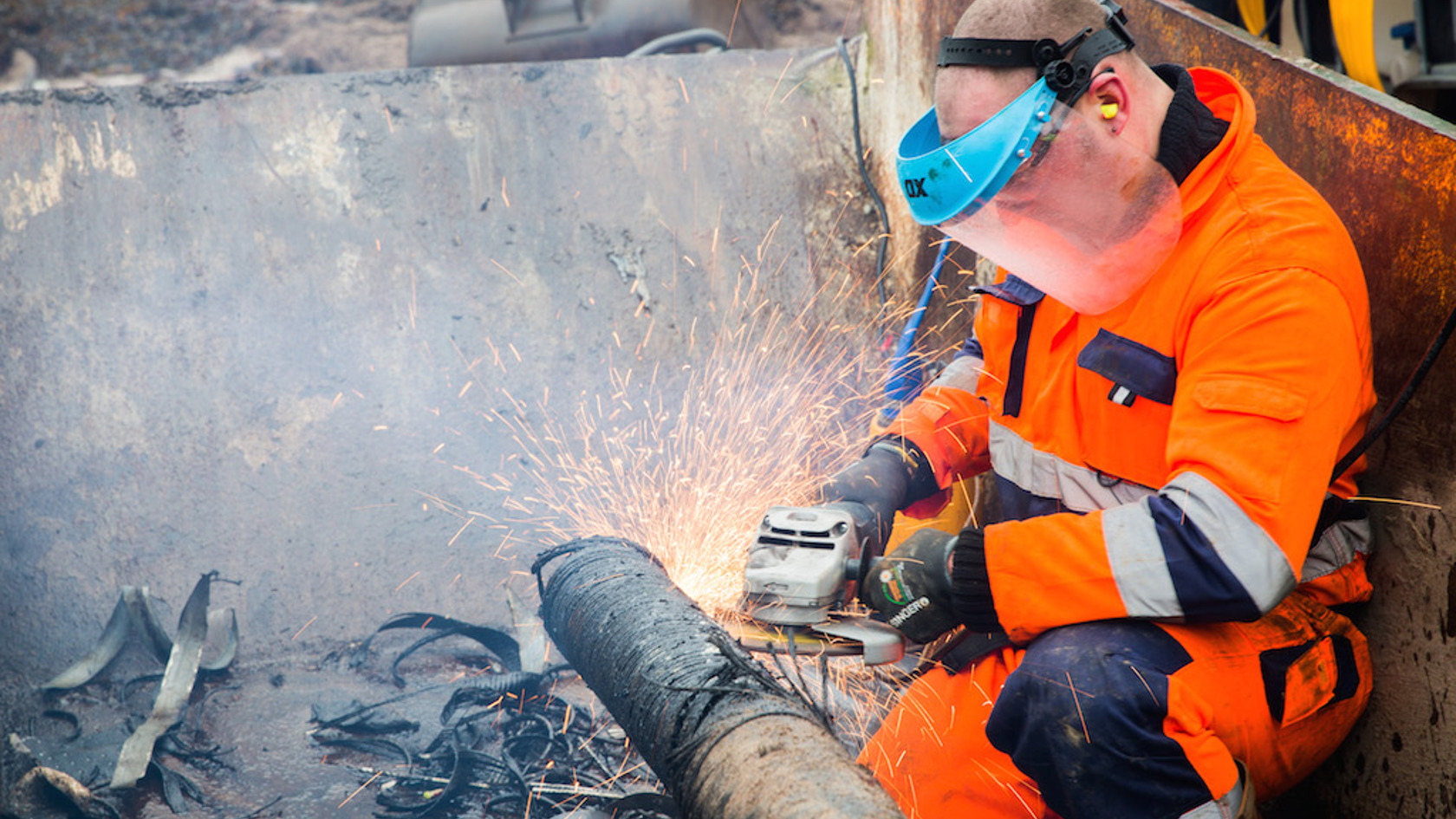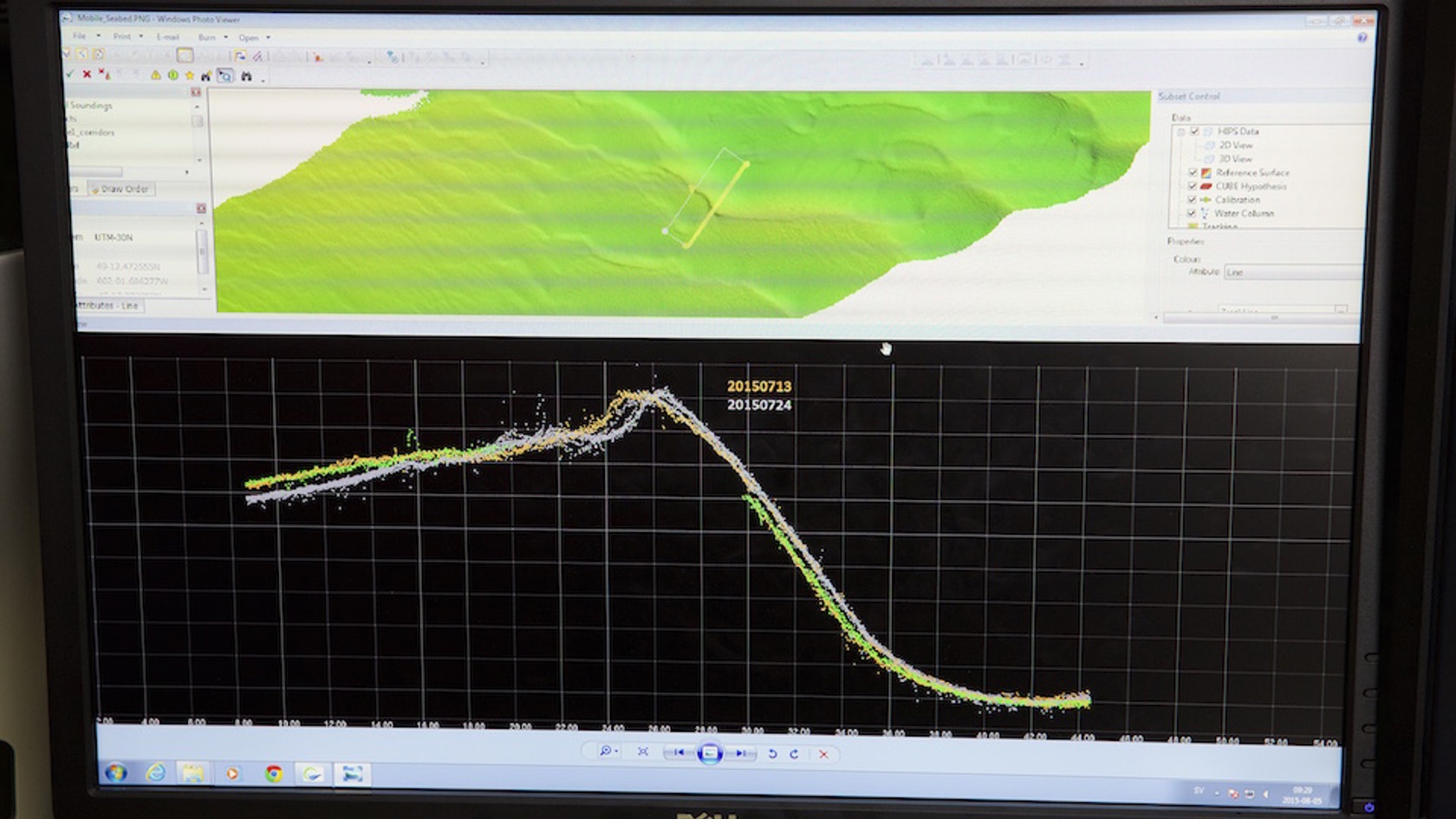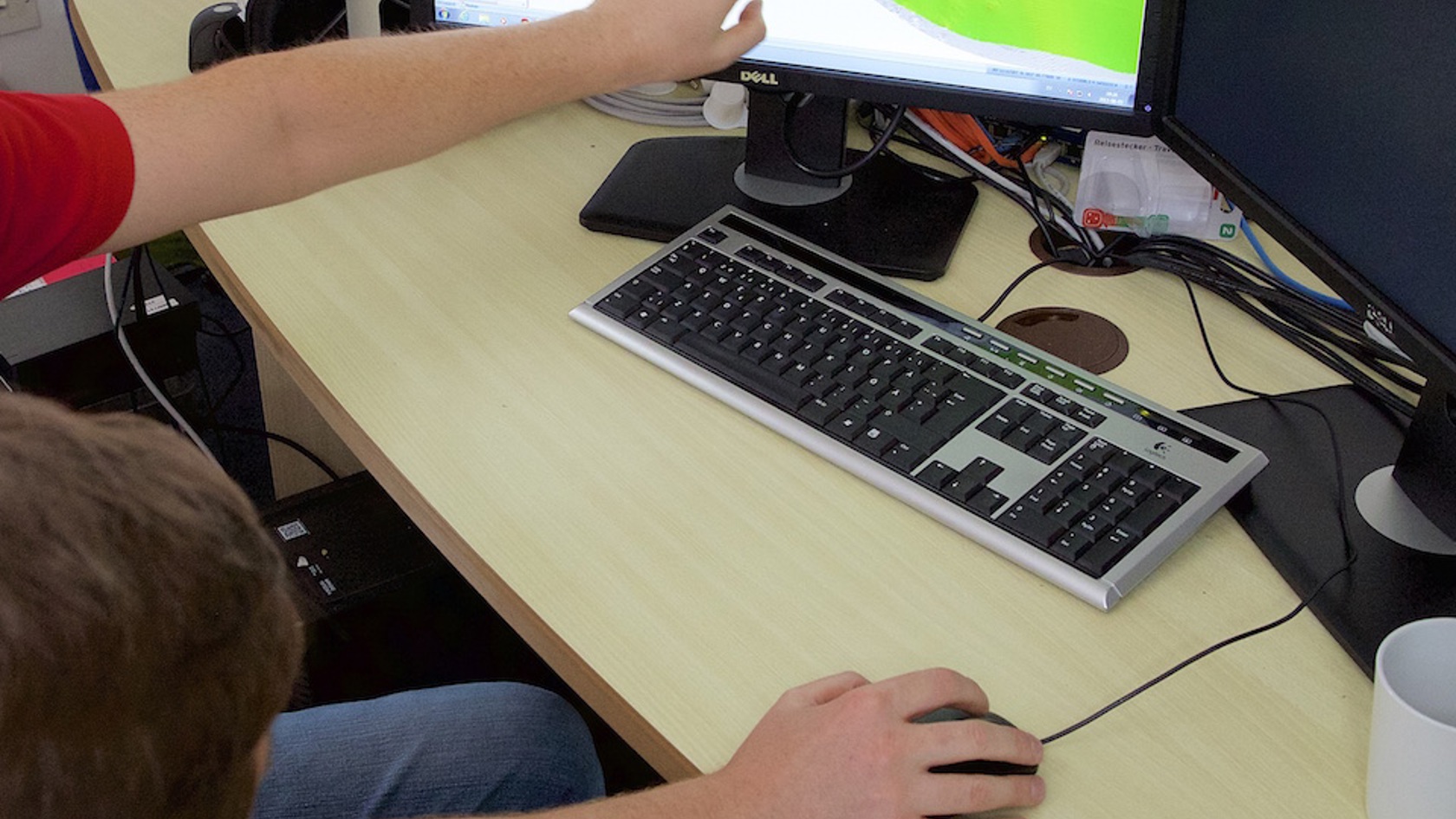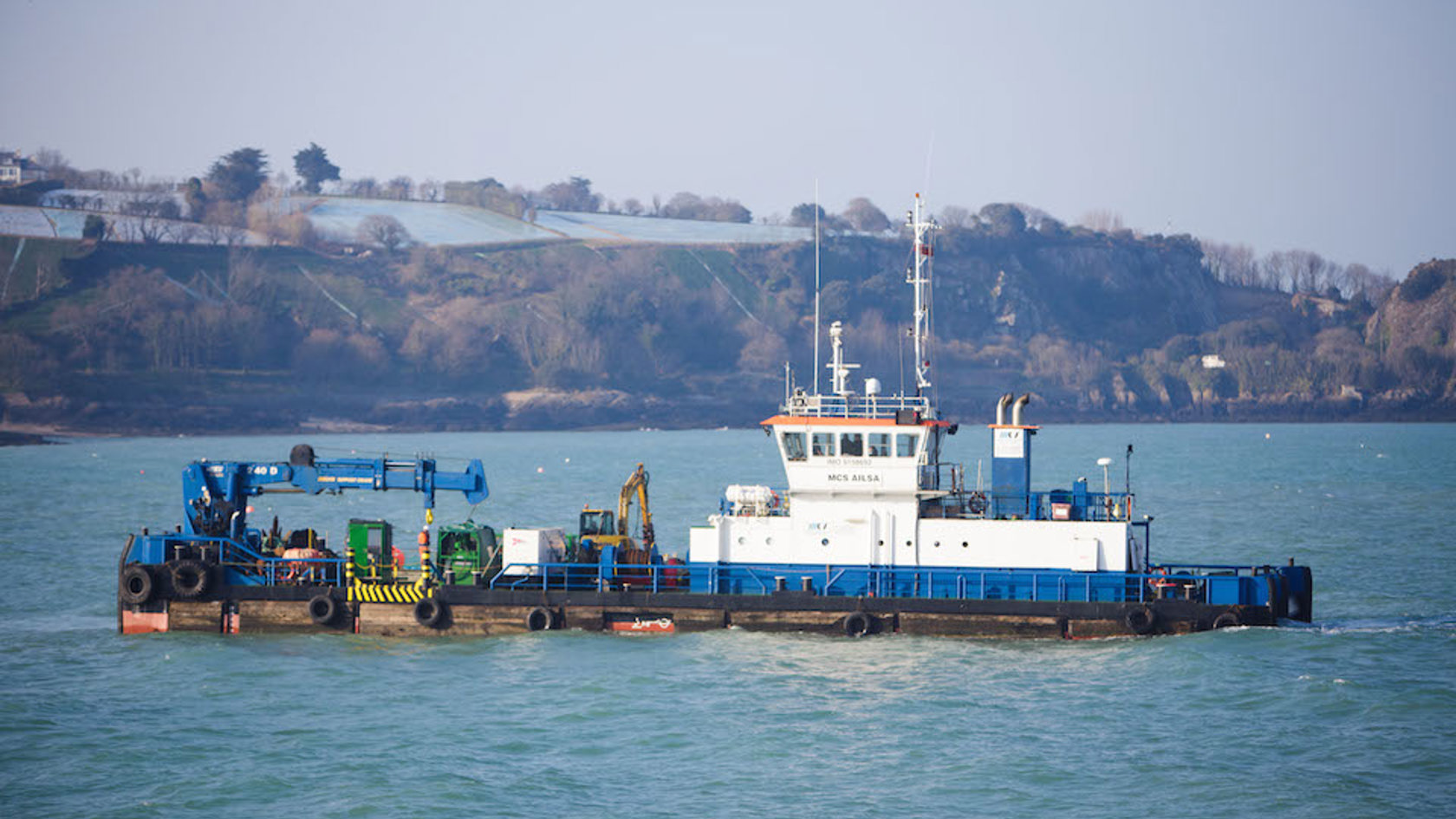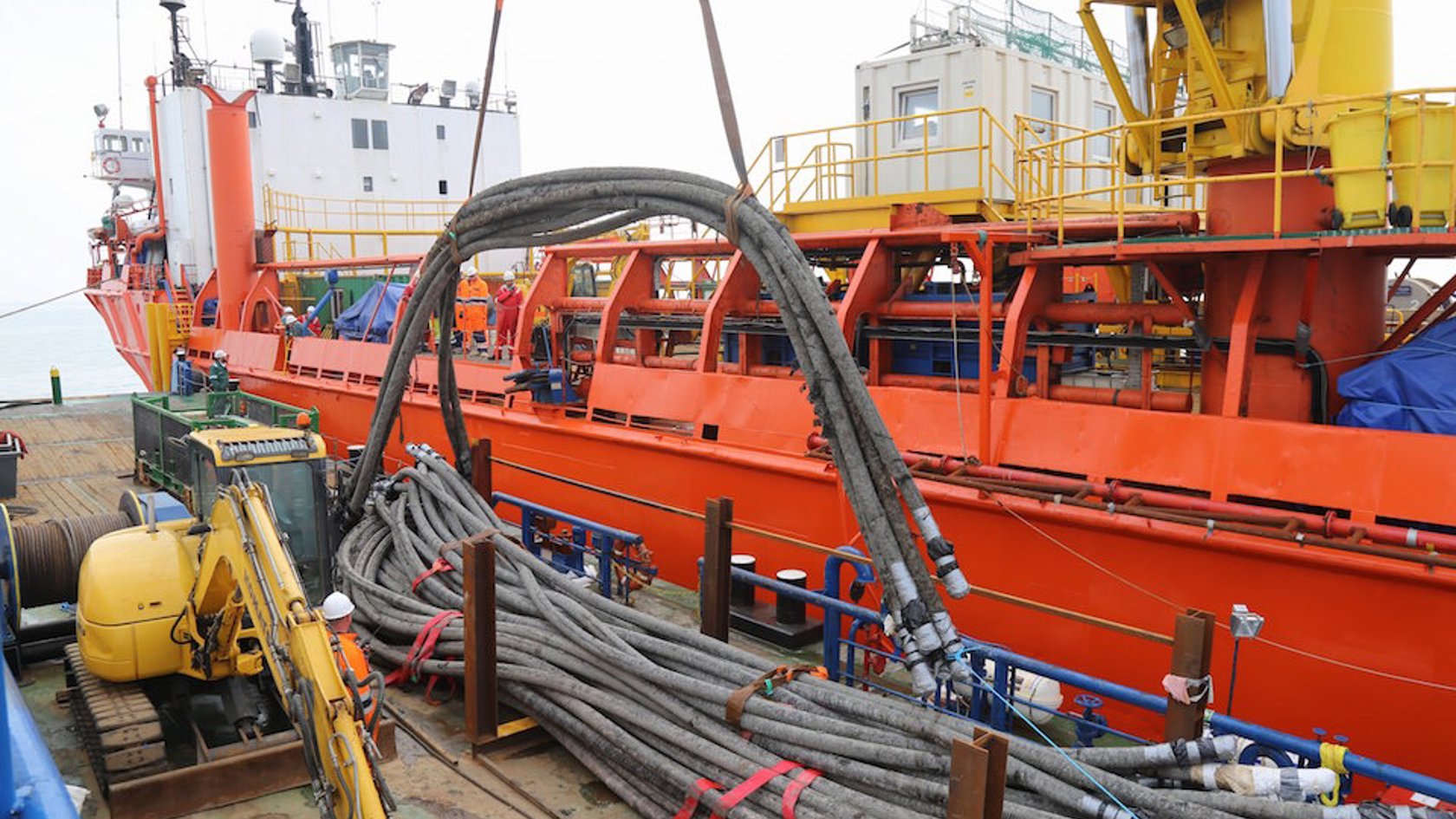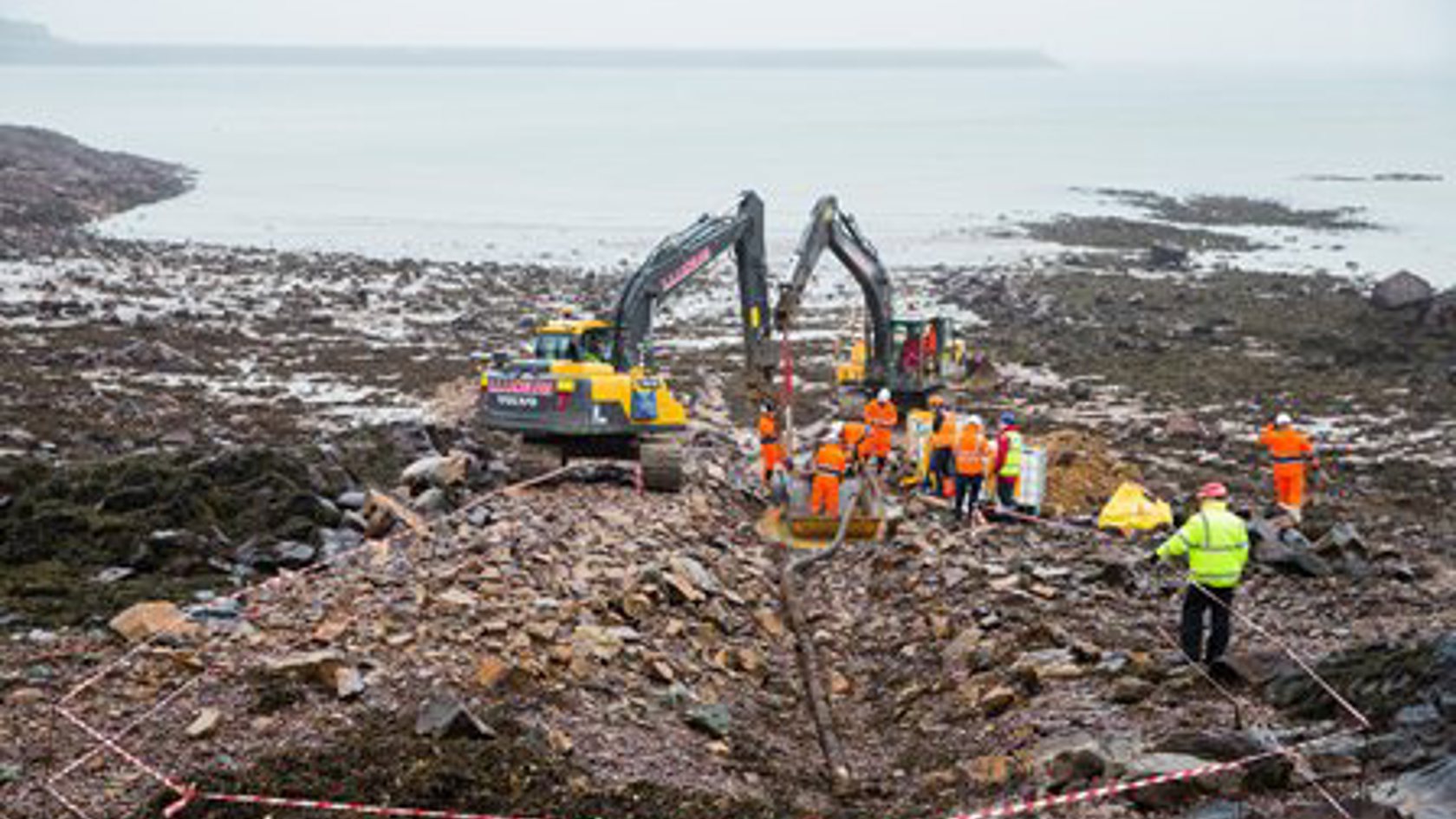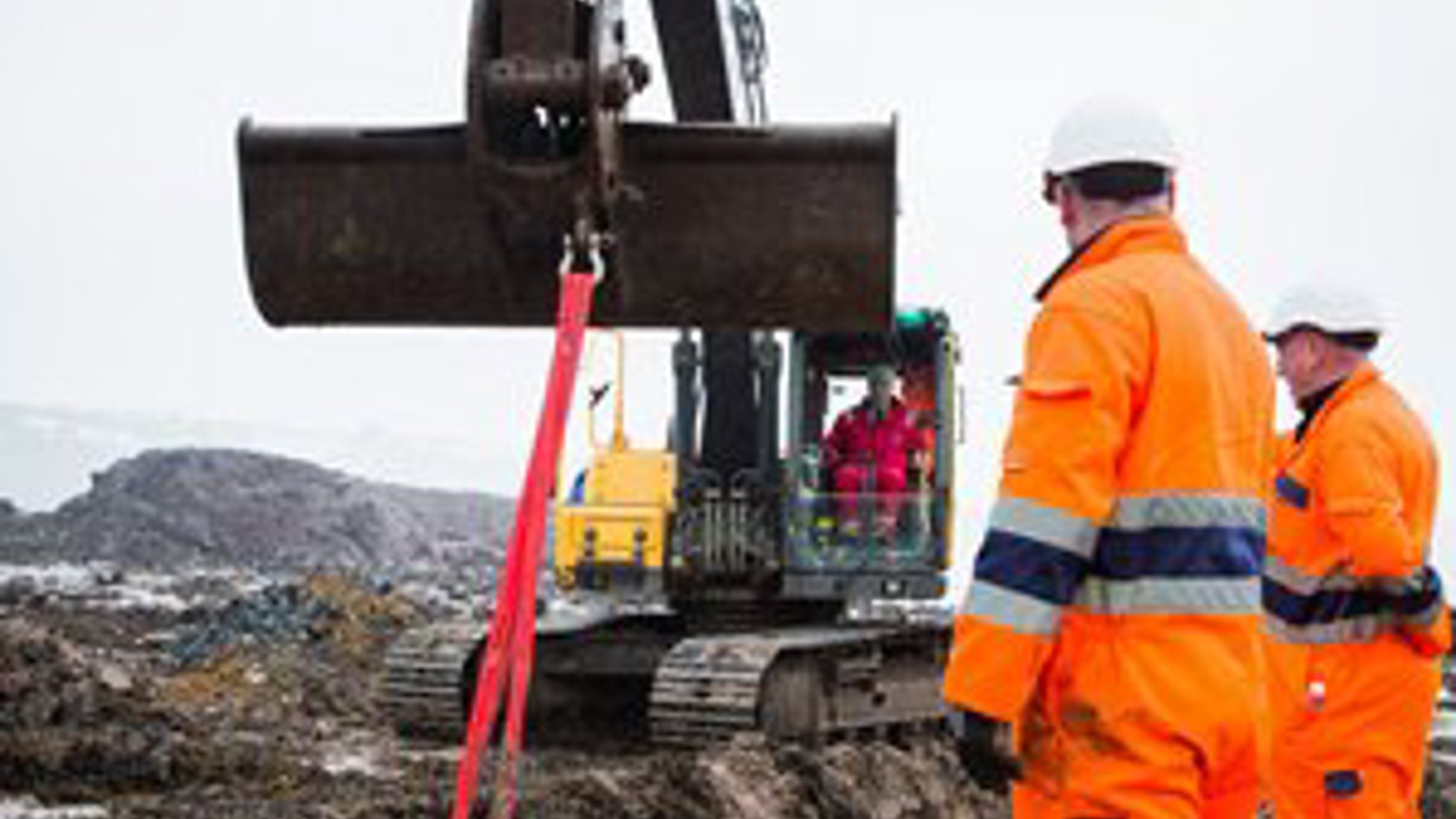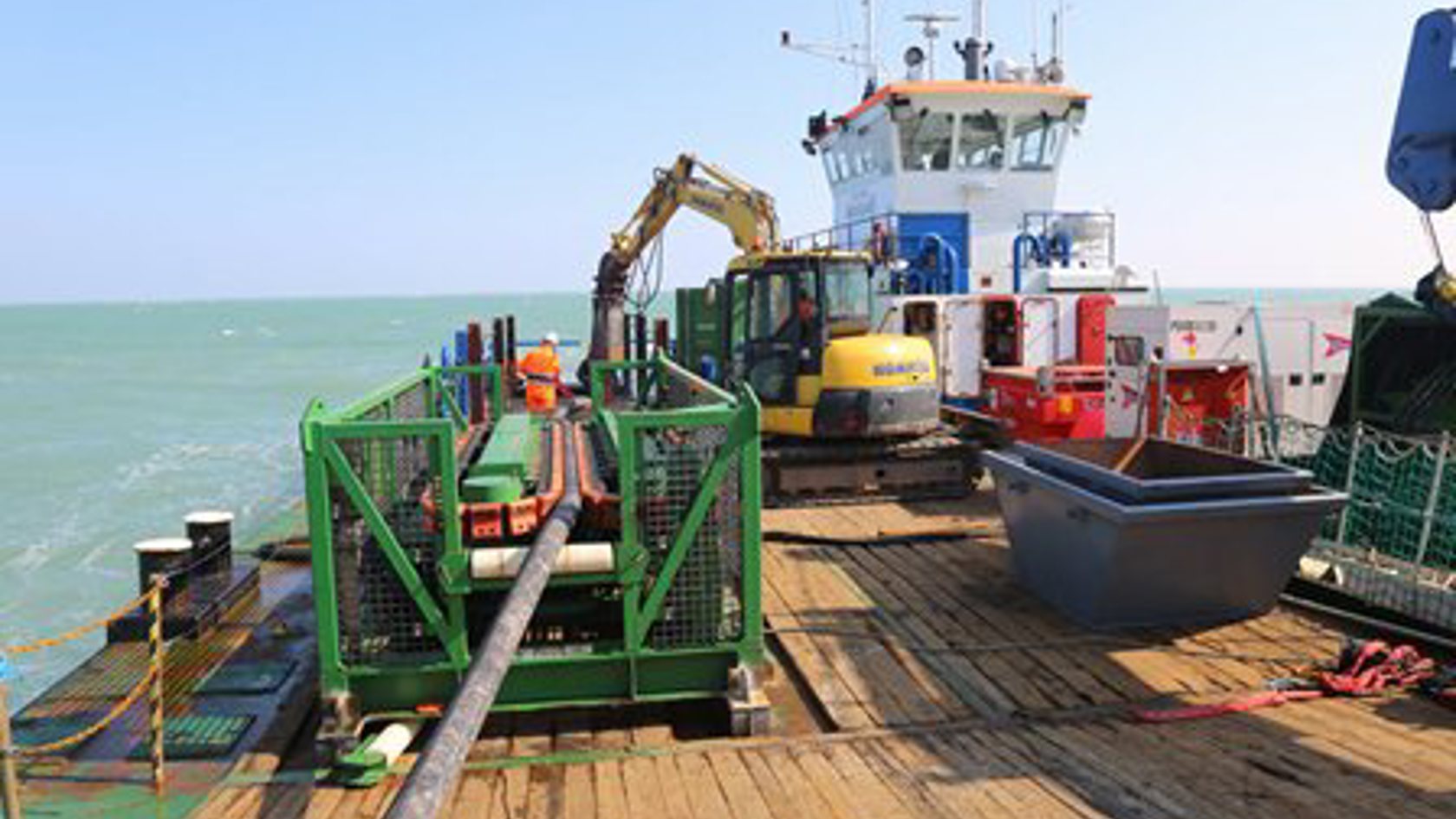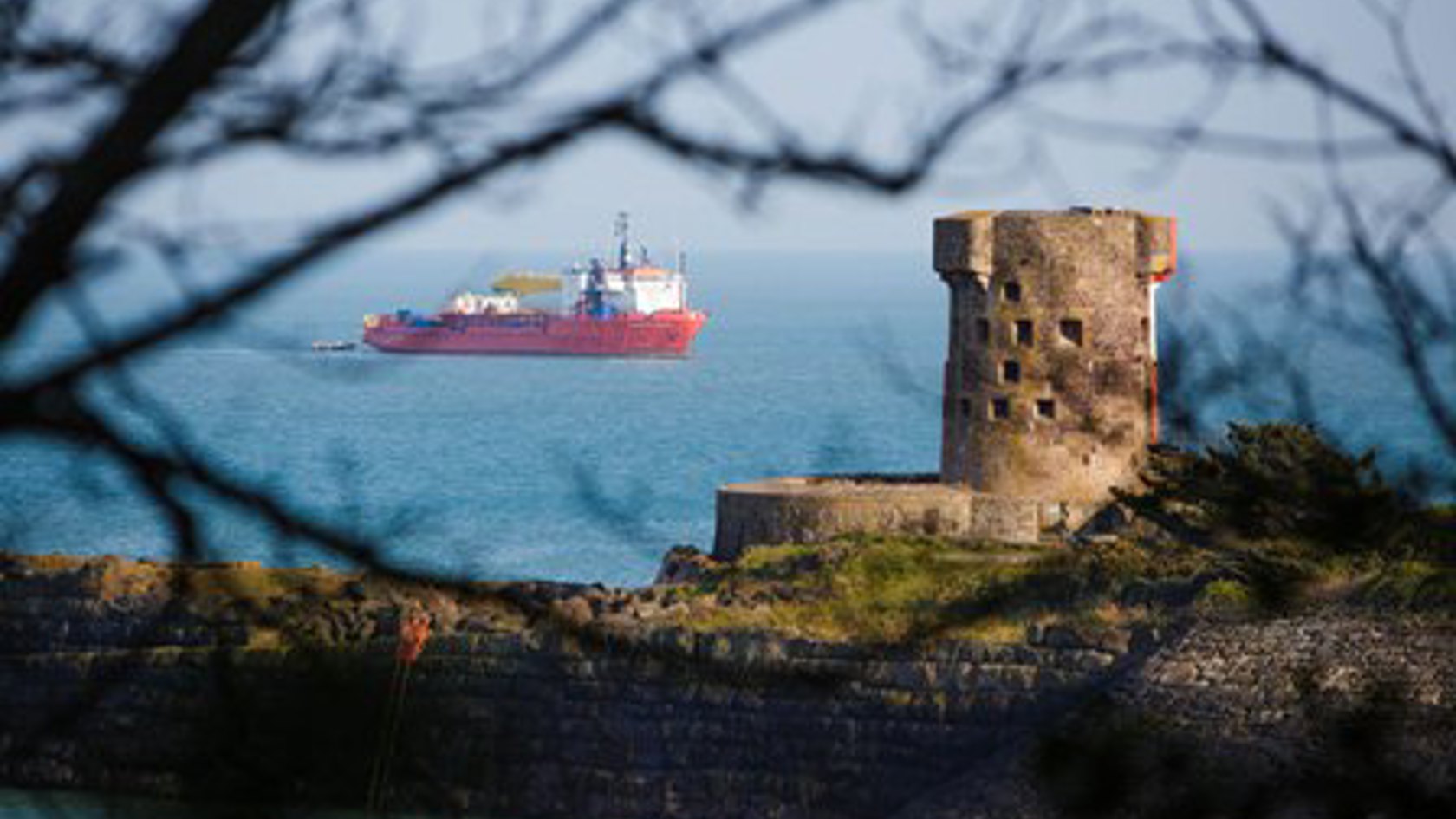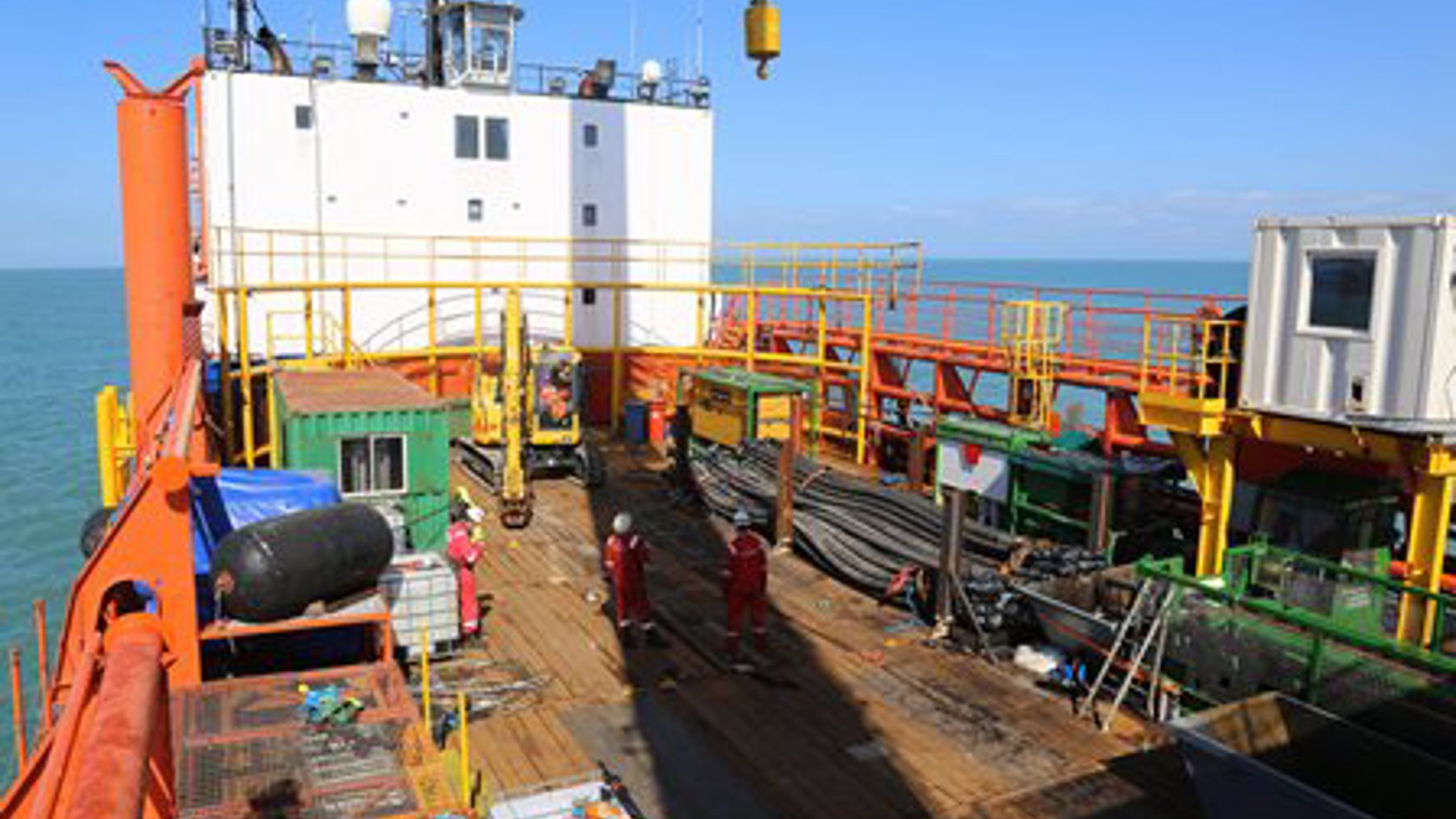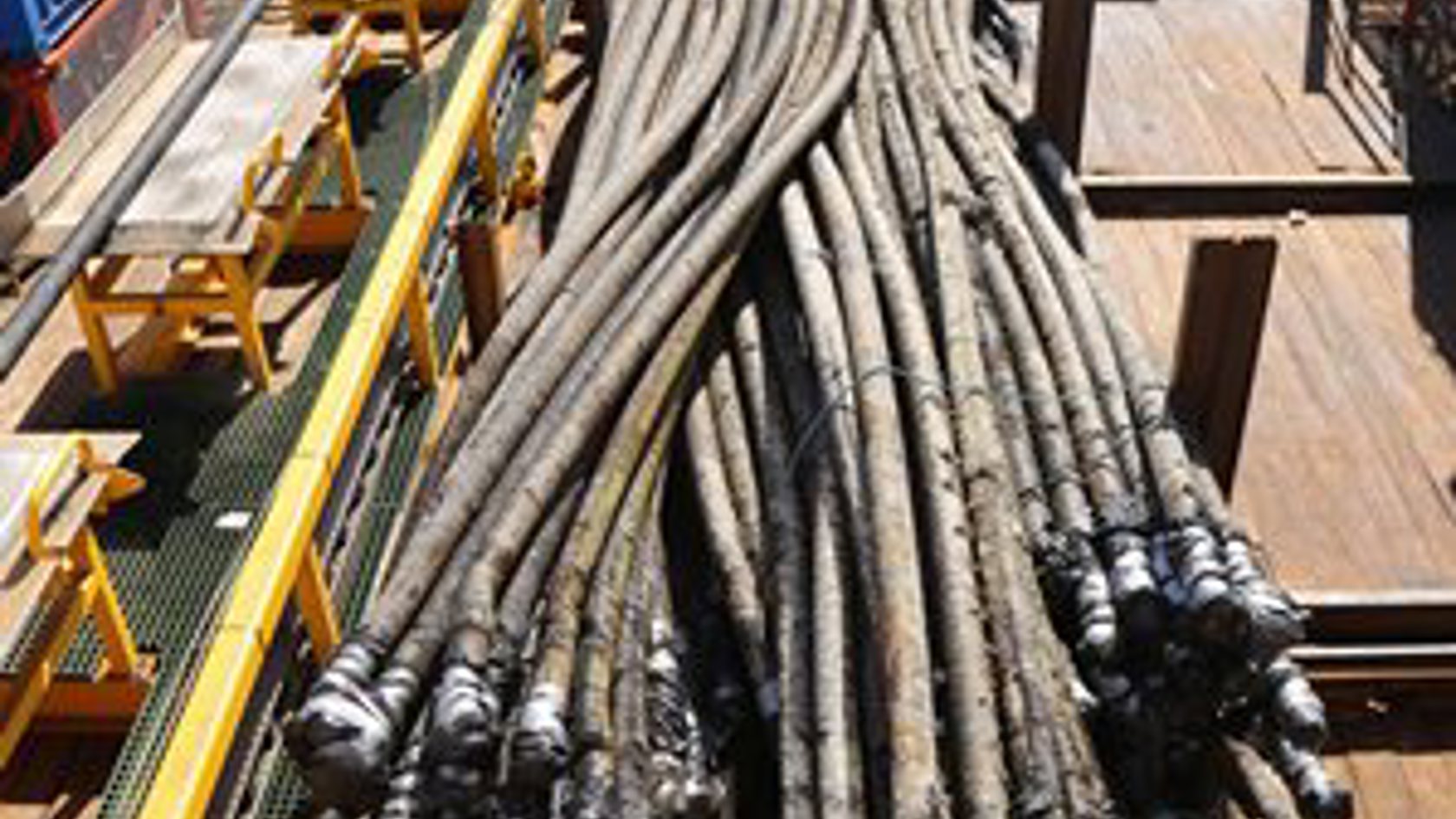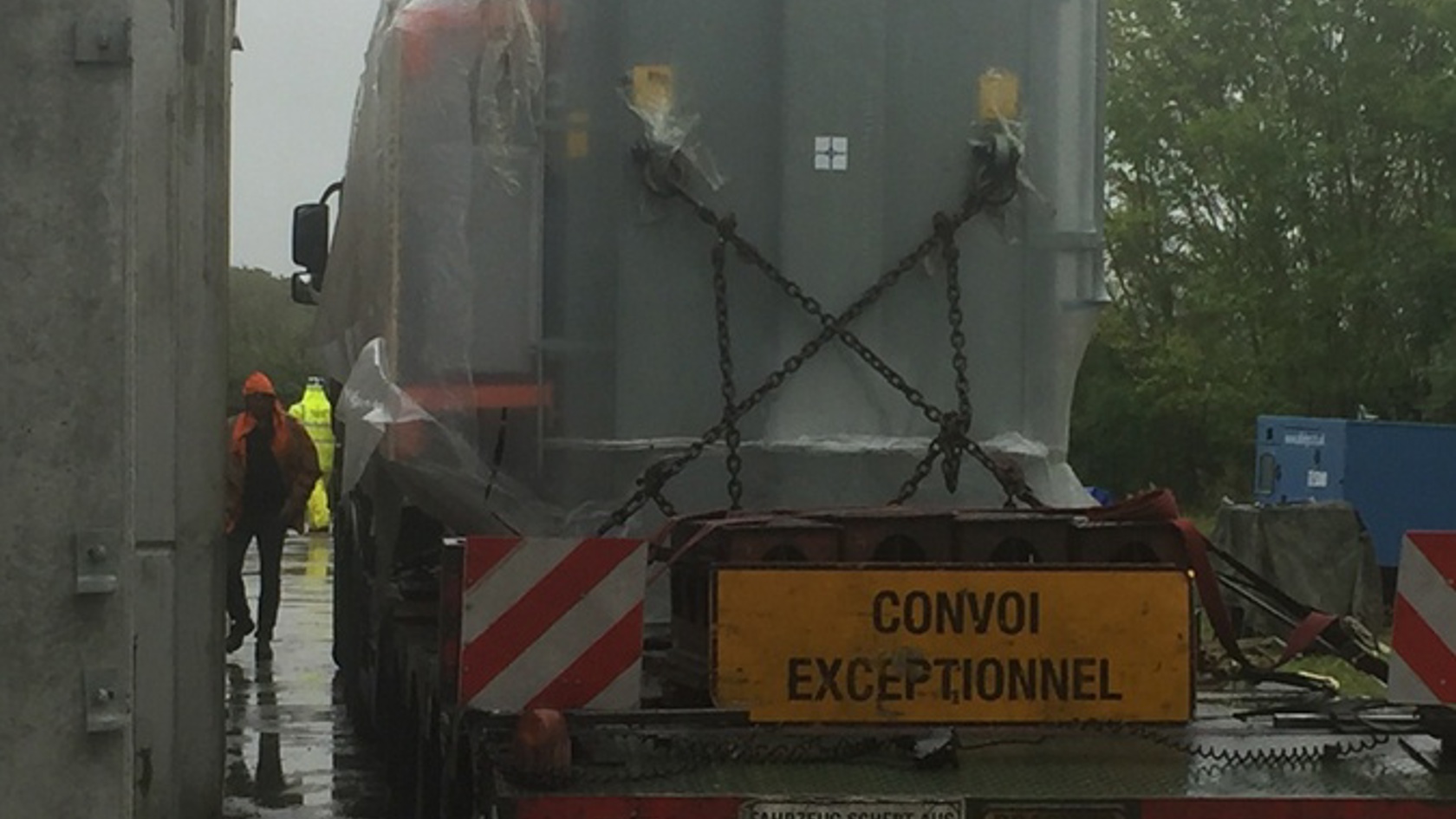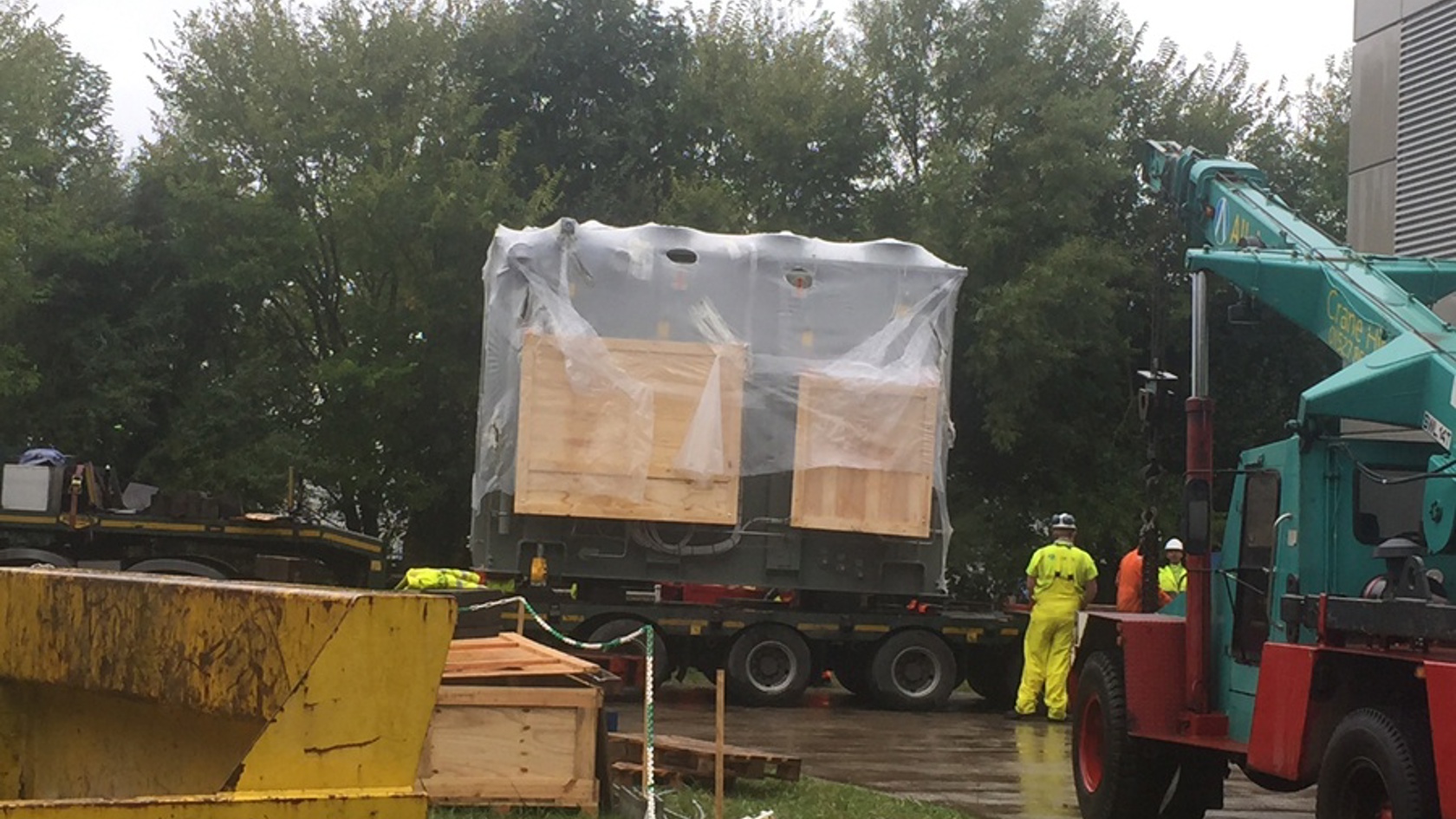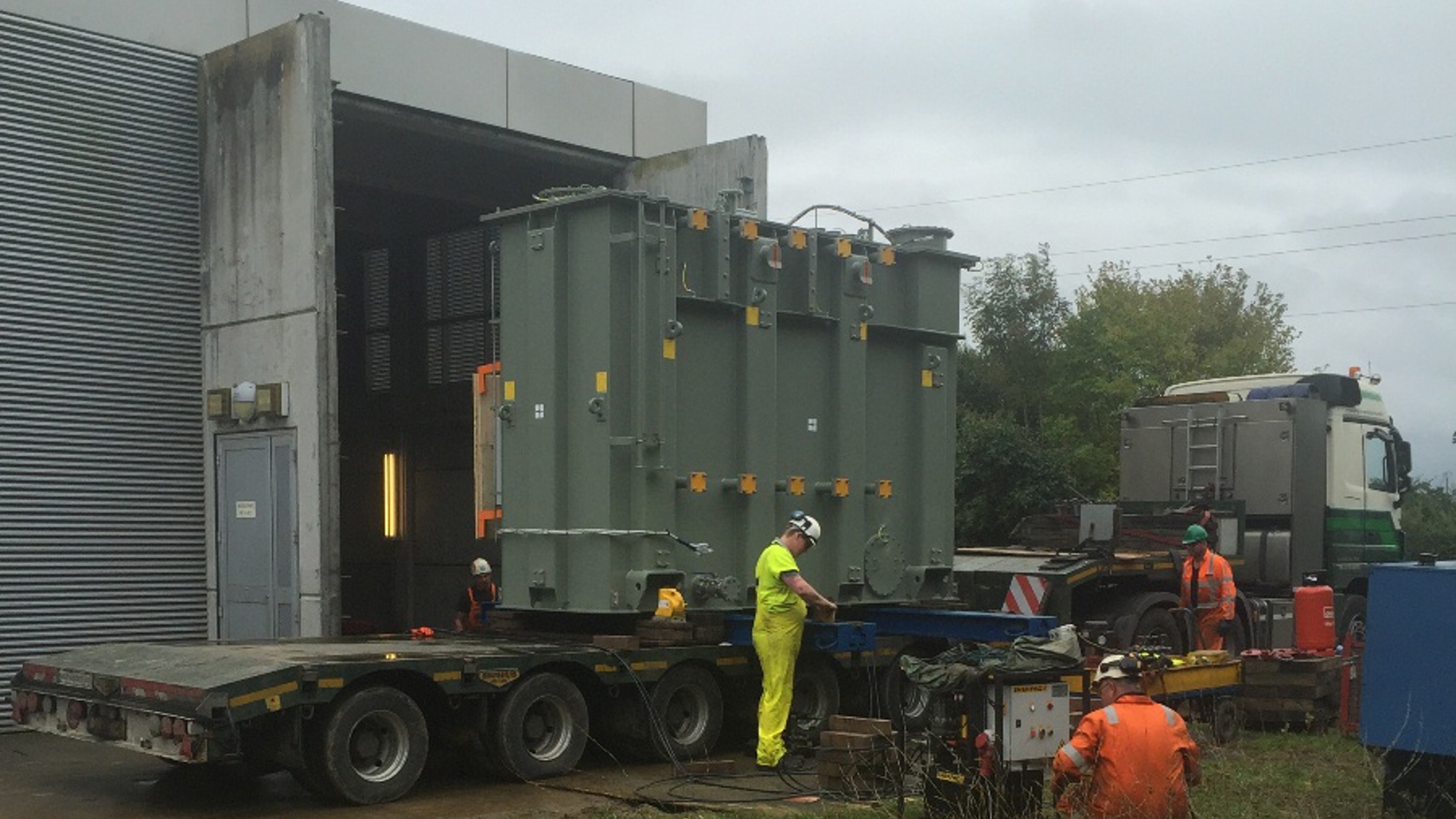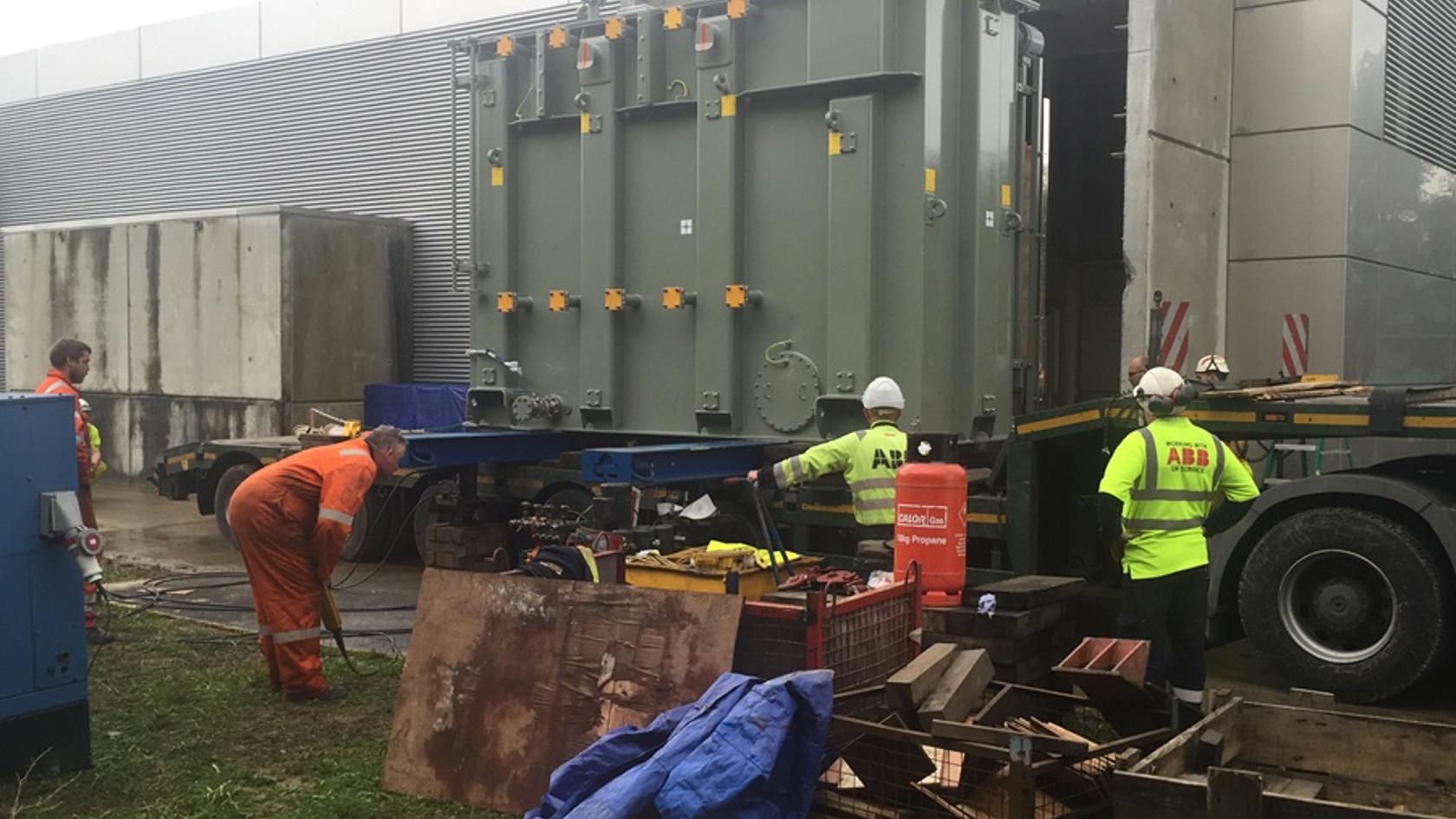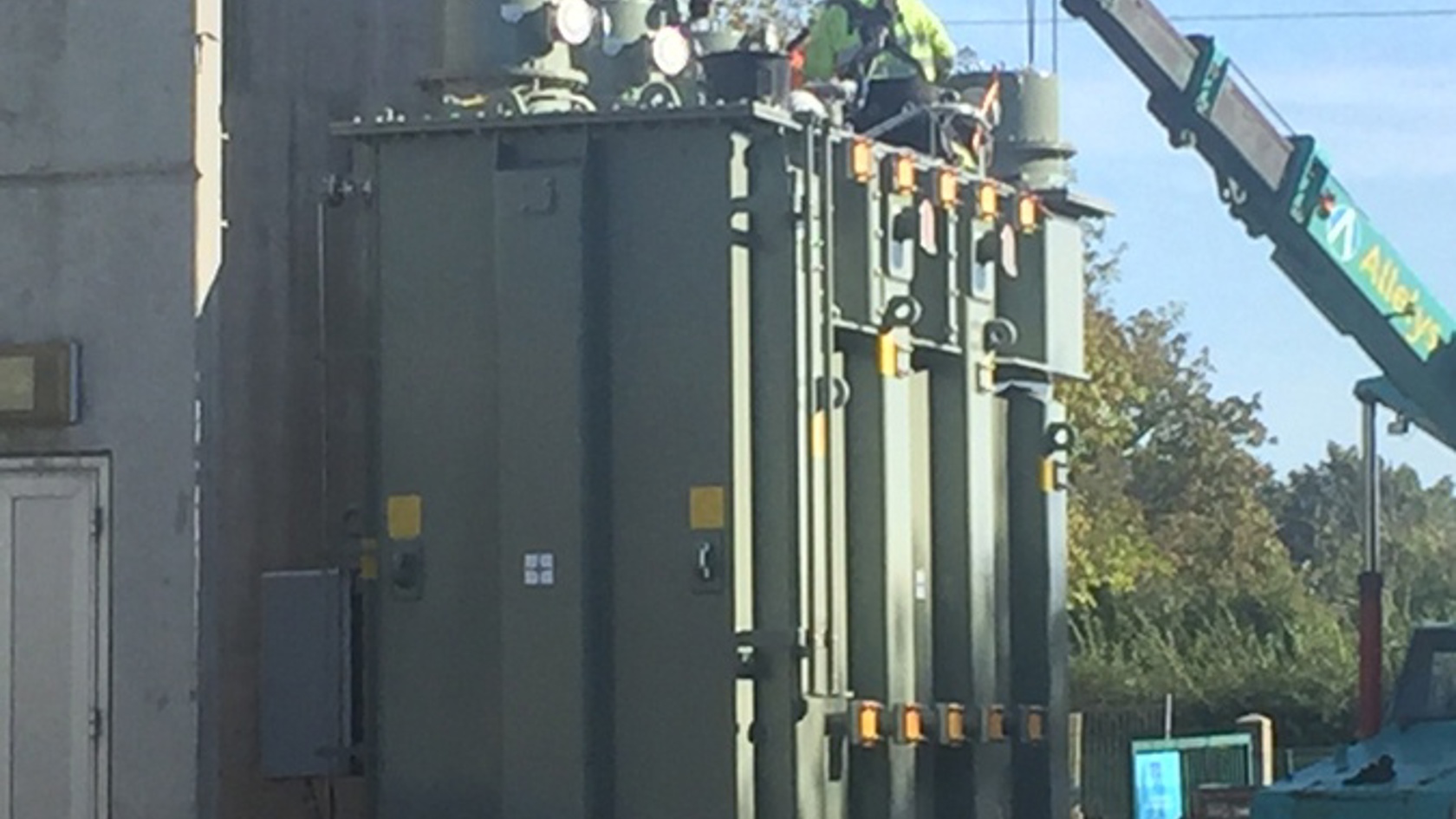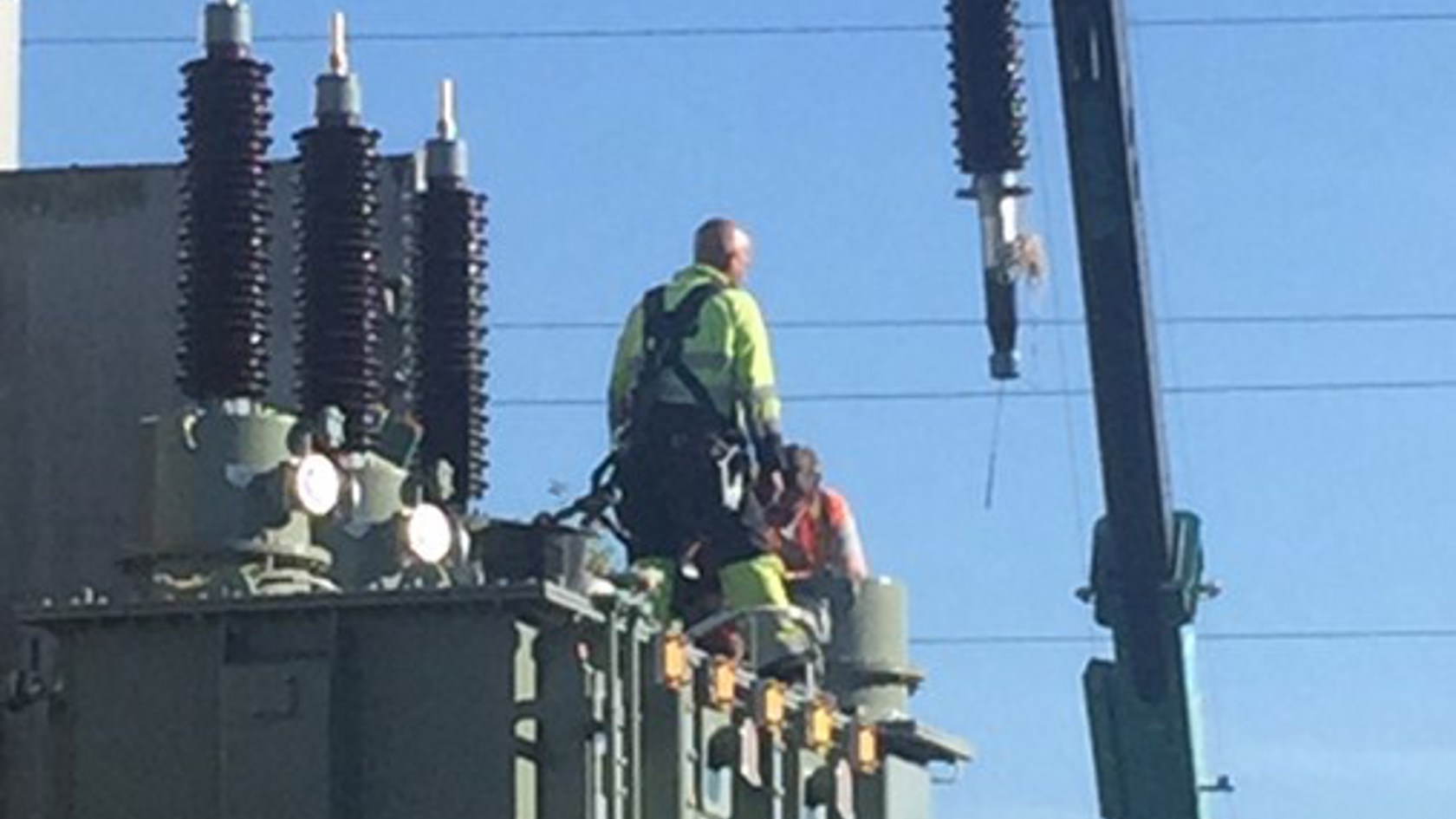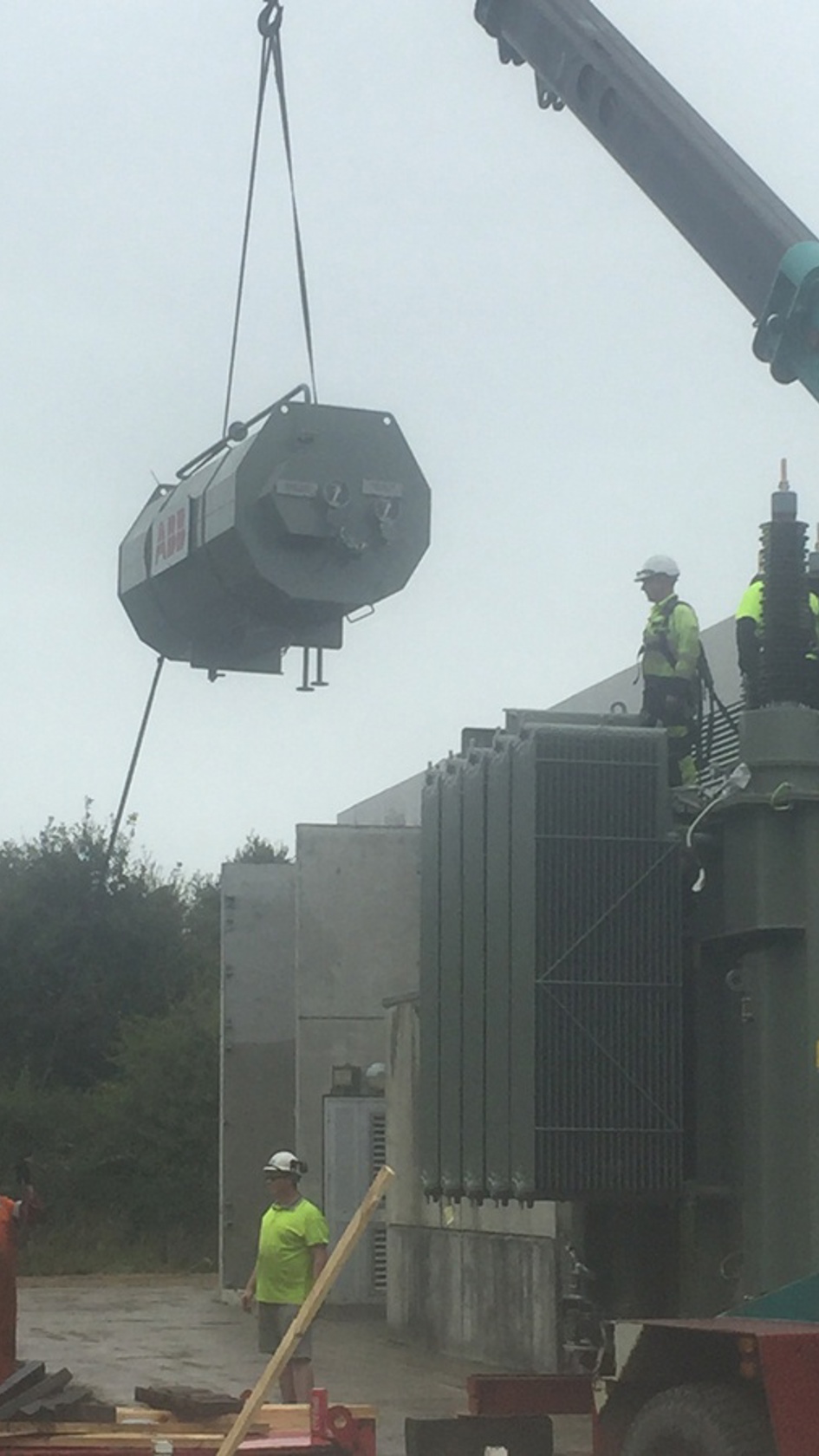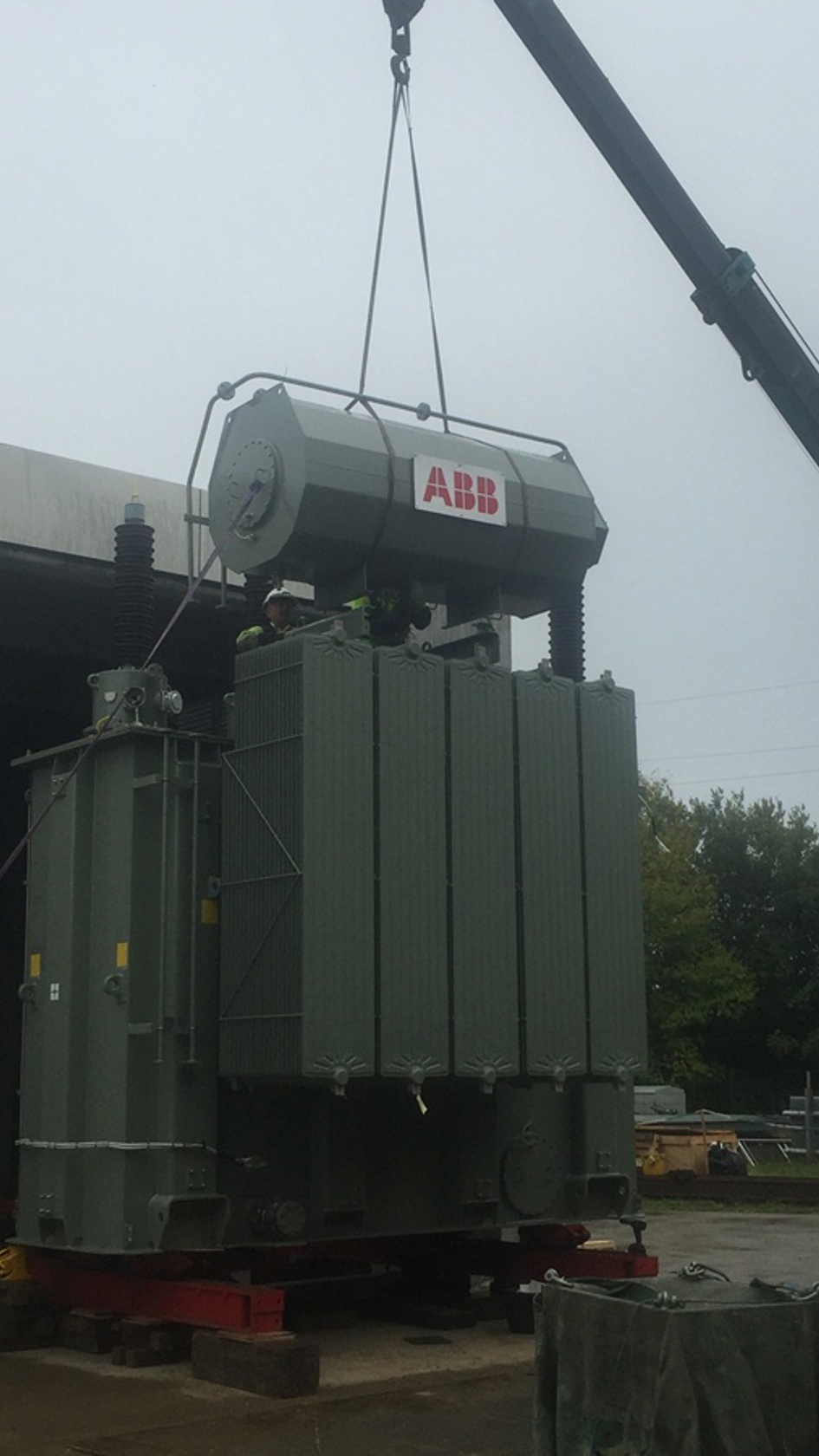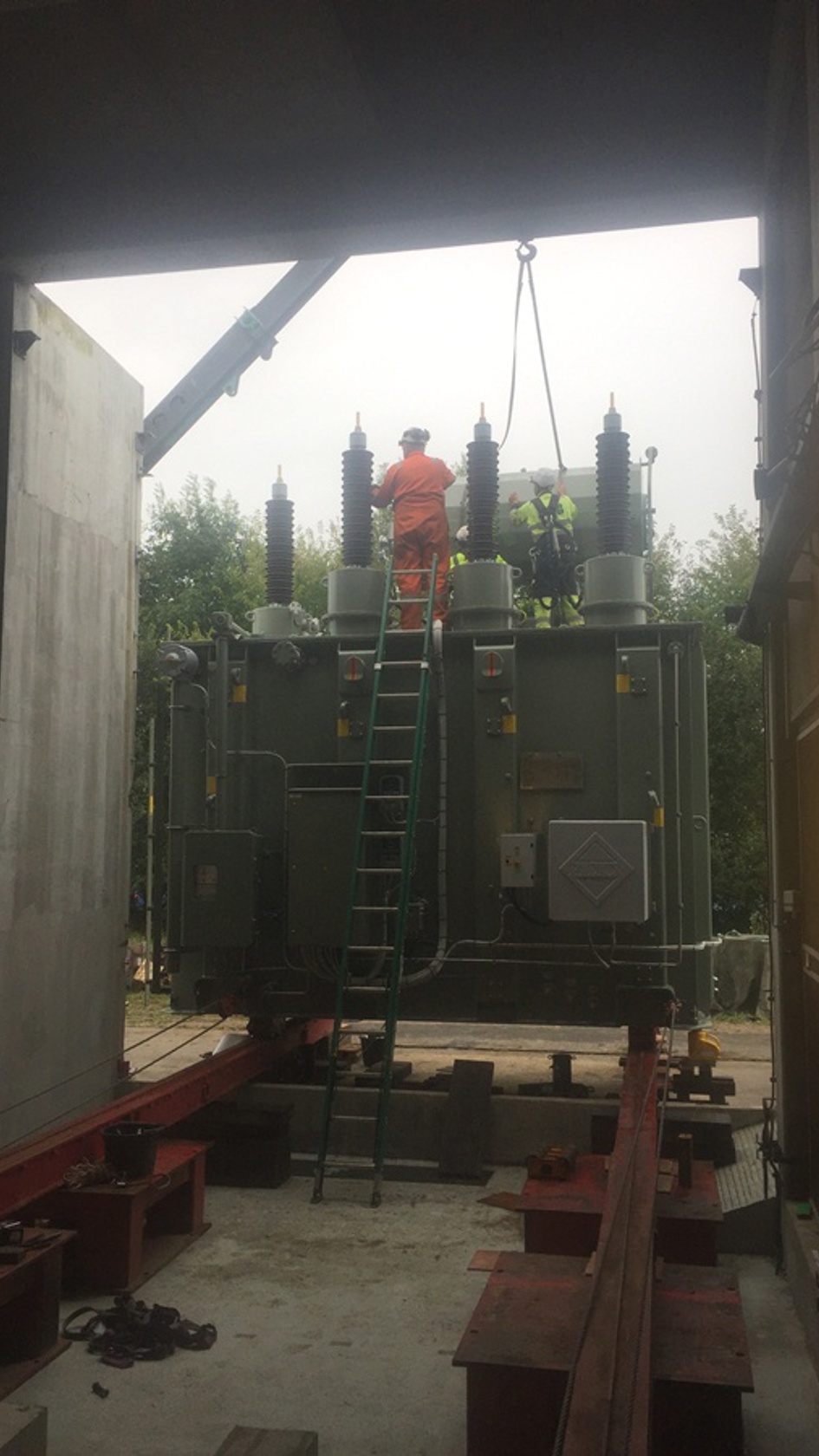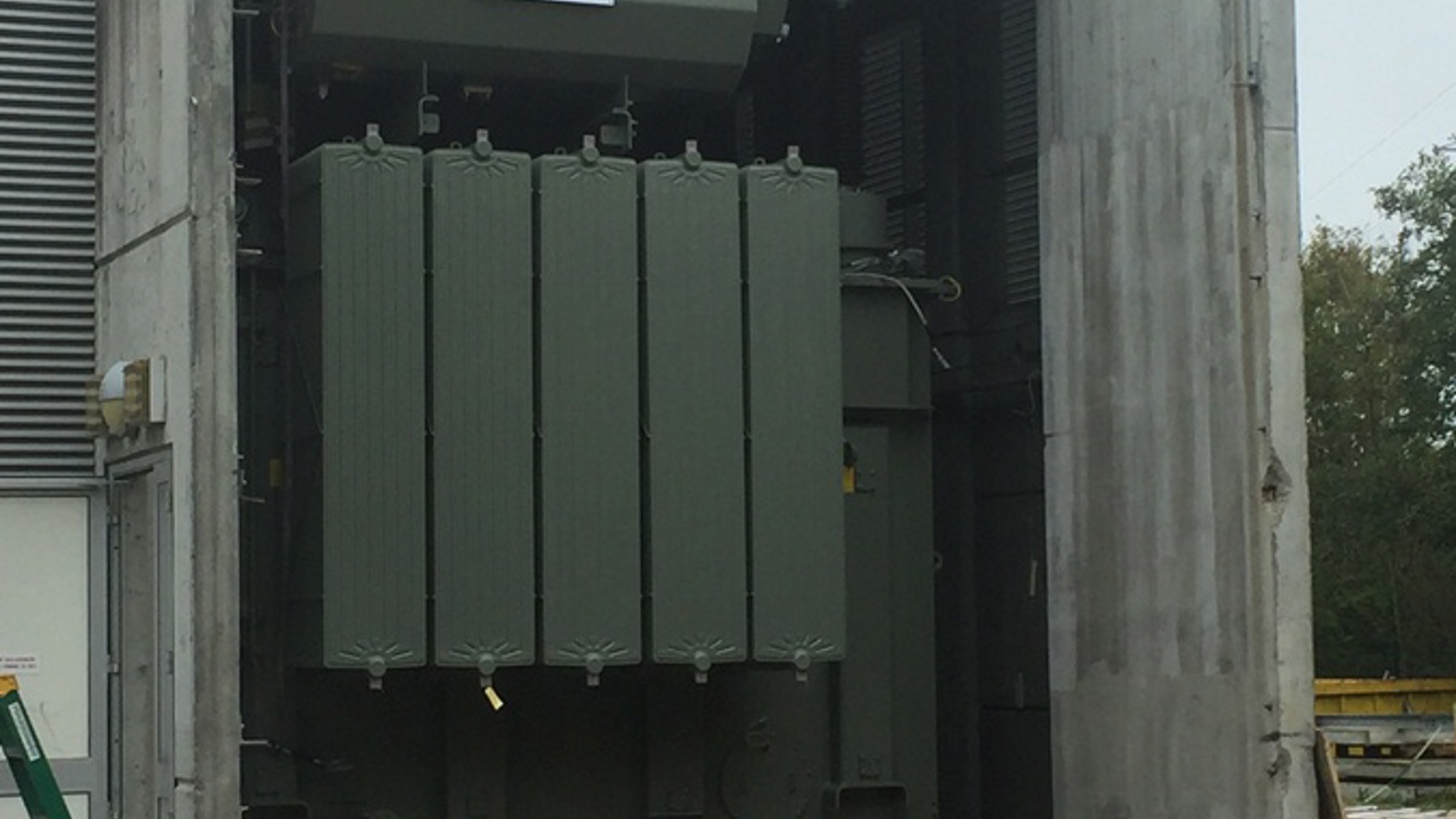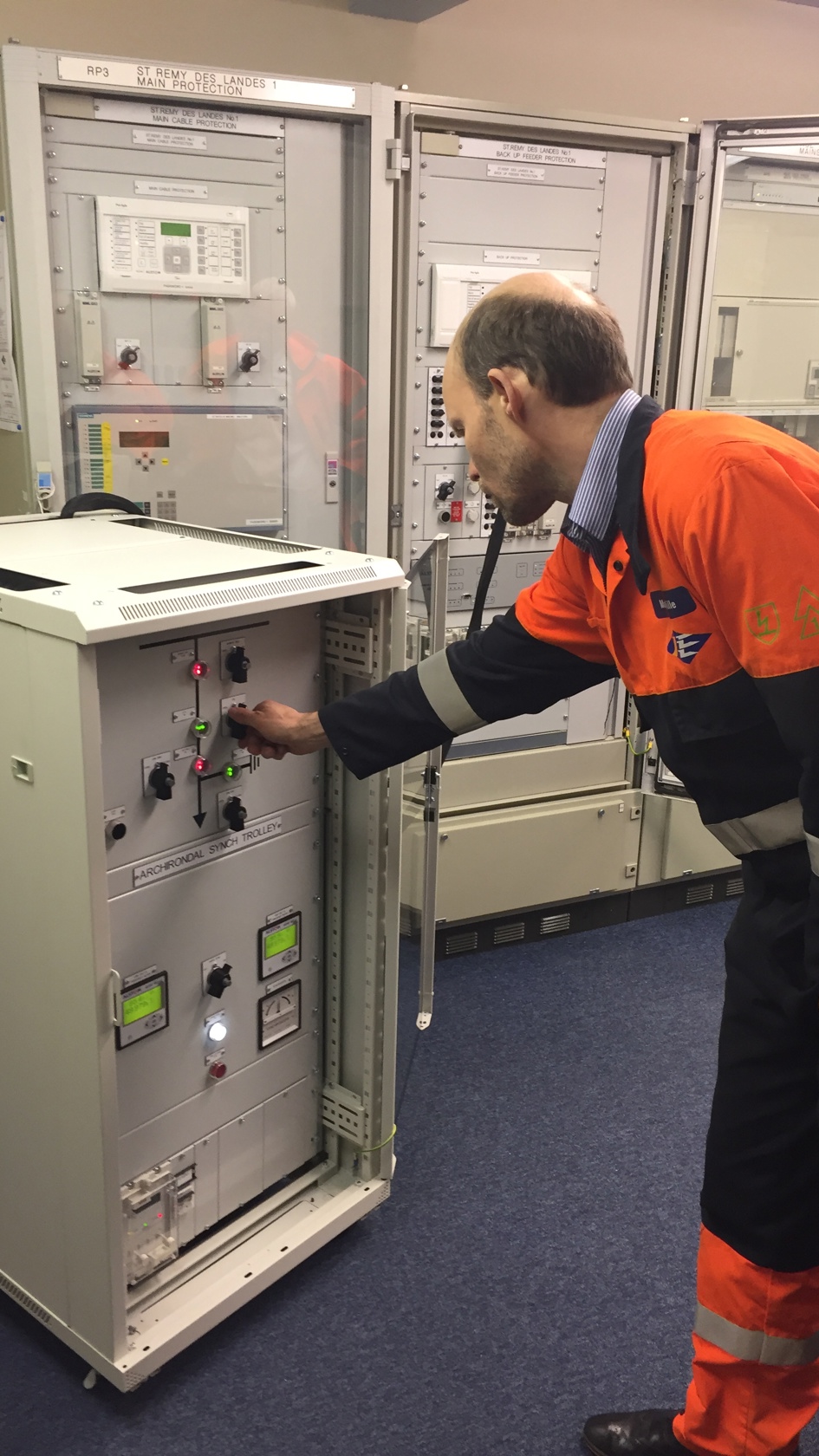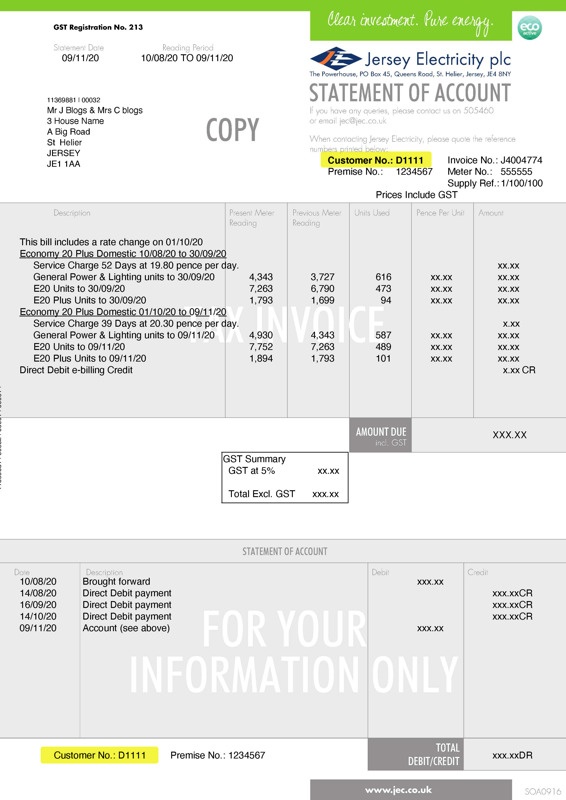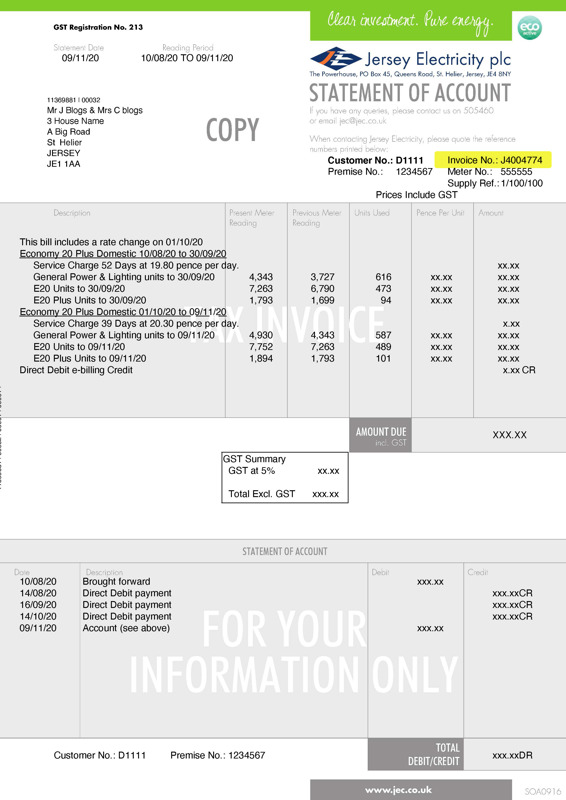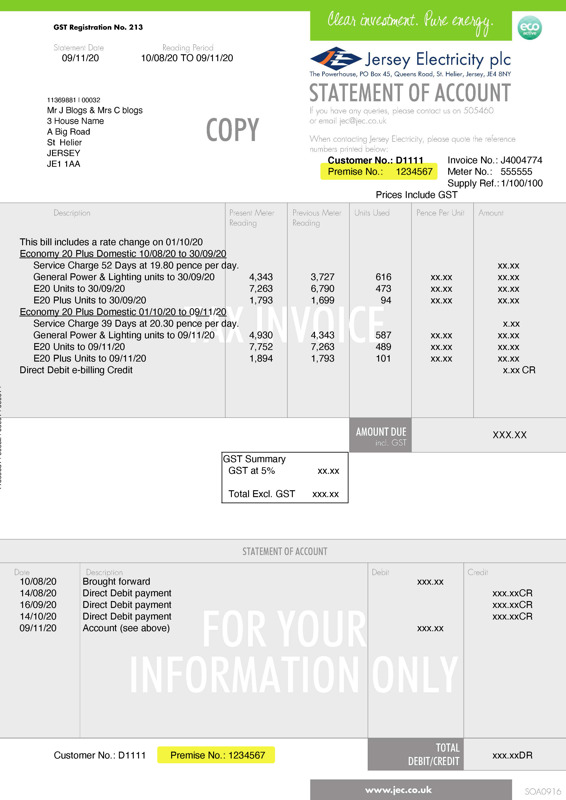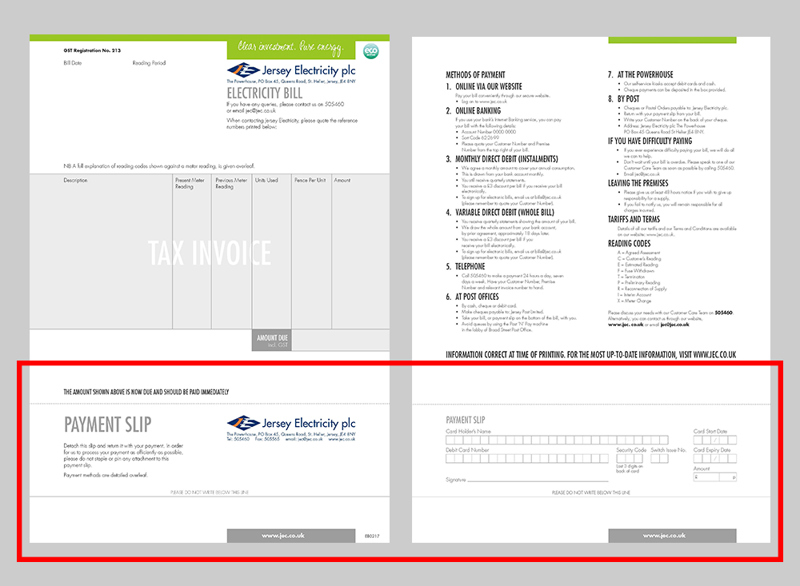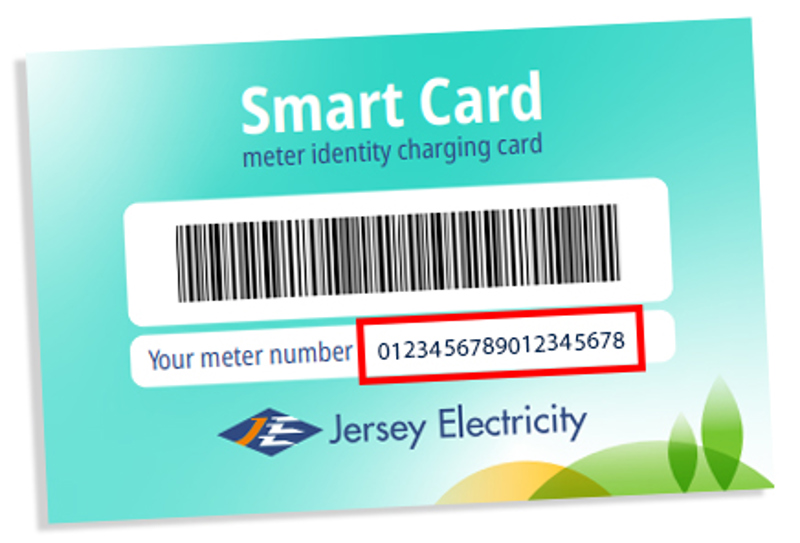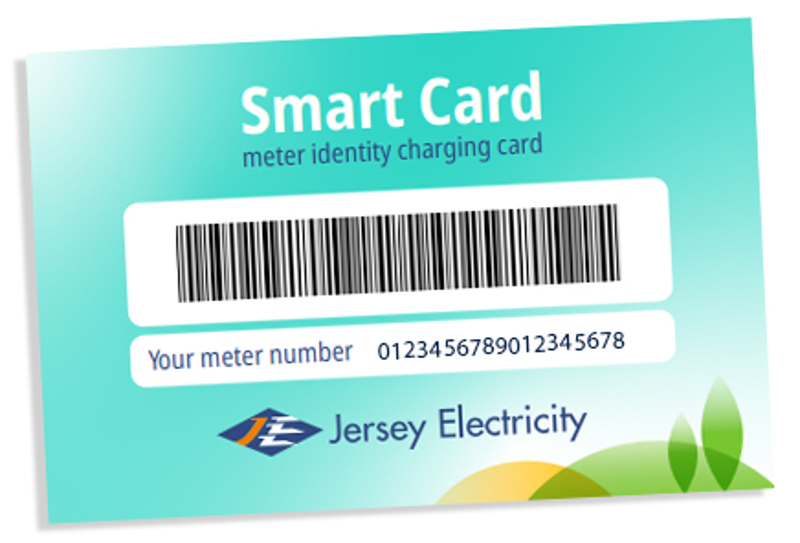Recovering EDF1 after 31 years on the seabed
Less than a year after the successful completion of our £70m Normandie 3 (N3) subsea cable project in October 2014, we signed contracts worth £20m with an international consortium for the manufacture and installation of Normandie 1 (N1) because it was always our intention to replace the original French link, EDF1, laid in 1985 and which came to the end of its life in 2012 after 28 years’ service.

The Route
World leading cable industry specialists Prysmian, who manufactured and installed N3 and its adjoining land cables, will manufacture the new cable at their flagship plant in Naples, while Dutch specialists VBMS will be responsible for its installation.
N1 follows the same 27km route as EDF1 from Archirondel to St Remy des Landes. Work surveying the route was carried out in the summer of 2015 by the 21-metre Askholmen near-shore survey vessel. Unlike N3, which took 11 weeks to install over a more southerly route, the installation of N1 is likely to take around only three weeks as it will be laid on the seabed, like its predecessor, rather than ploughed in beneath it.

The Recovery
The Askholmen used high frequency sonar to measure the relief and topography of the seabed. This helped the cable route planners to determine a precise route avoiding obstacles (mainly boulders) and terrain features that would stress the cable (peaks and valleys). The vessel also towed a magnetometer to detect metallic objects that could pose problems to the installation. These could be other old cables, wrecks, stray fishing gear or unexploded ordnance dumped during the Second World War.
Just like naturally occurring obstacles, the cable installation route is carefully mapped to avoid them.
EDF1 had been prepared in readiness for removal after 31 years on the seabed and its recovery began in earnest in March 2016 after a £1.5m contract for the work was signed with Hughes Sub Surface Engineering of Merseyside.

The Result
First the beach works team from GPC Cumbria excavated the cable from the Archirondel beach to the low tide mark. As they moved to carry out the same work on the French side, the multi-cat Ailsa was deployed to recover the first 1km of cable in shallow waters. Then on 22 March 2016 the 2,685-tonne Atlantic Carrier arrived off Jersey to begin recovering the remainder of the 27km, 55MW cable from the seabed.
By the end of March the Atlantic had offloaded the first 1,200m from the Ailsa and recovered a further 3,500m from deeper Jersey waters before departing for England to discharge the scrap for responsible disposal and recycling. The Ailsa, having recovered the first 1,300m from the French shoreline returned to Great Yarmouth, her work complete.
The Atlantic returned to Jersey on 3 April to continue with the rest of EDF1’s recovery. This was successfully completed in mid-April.

